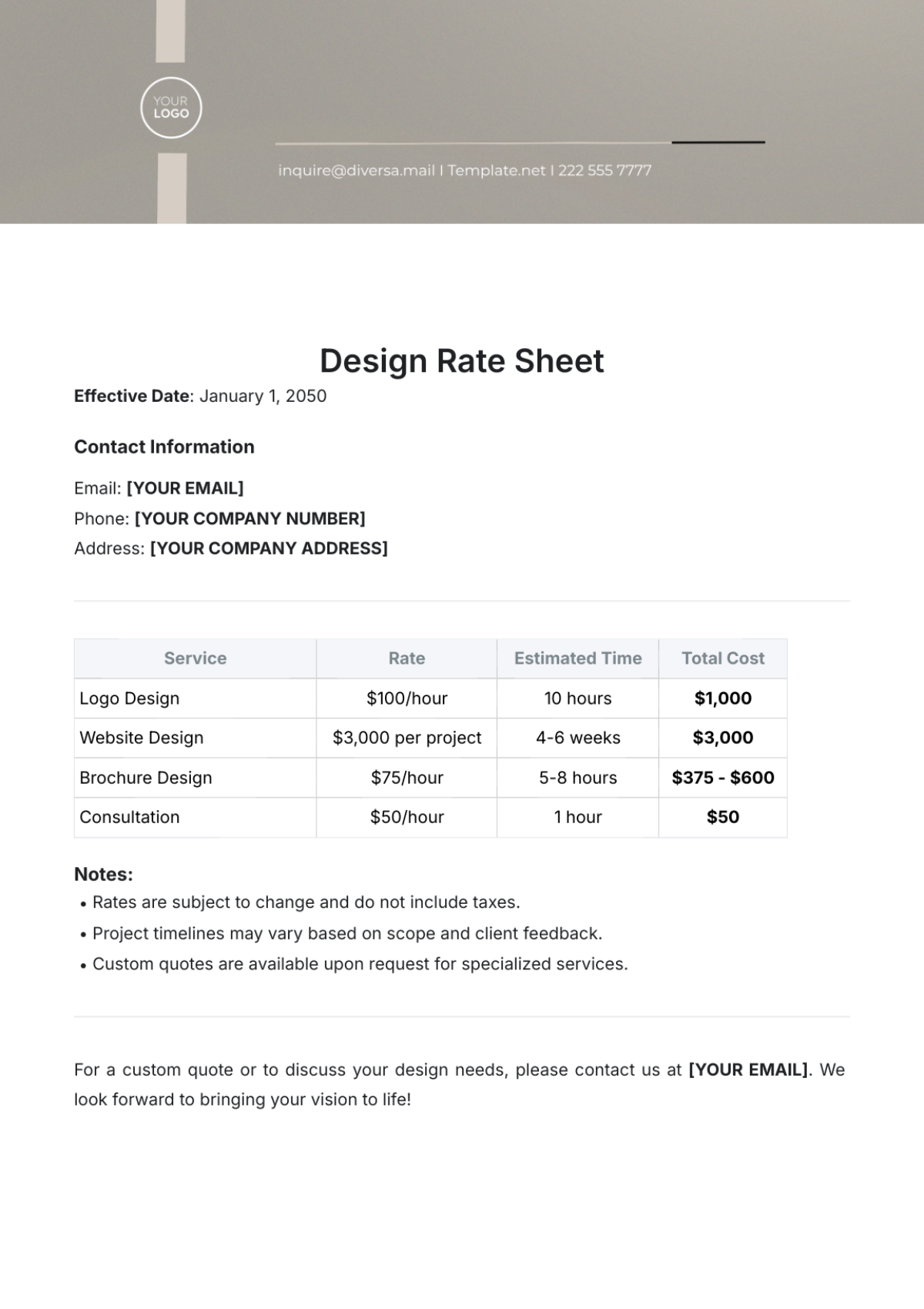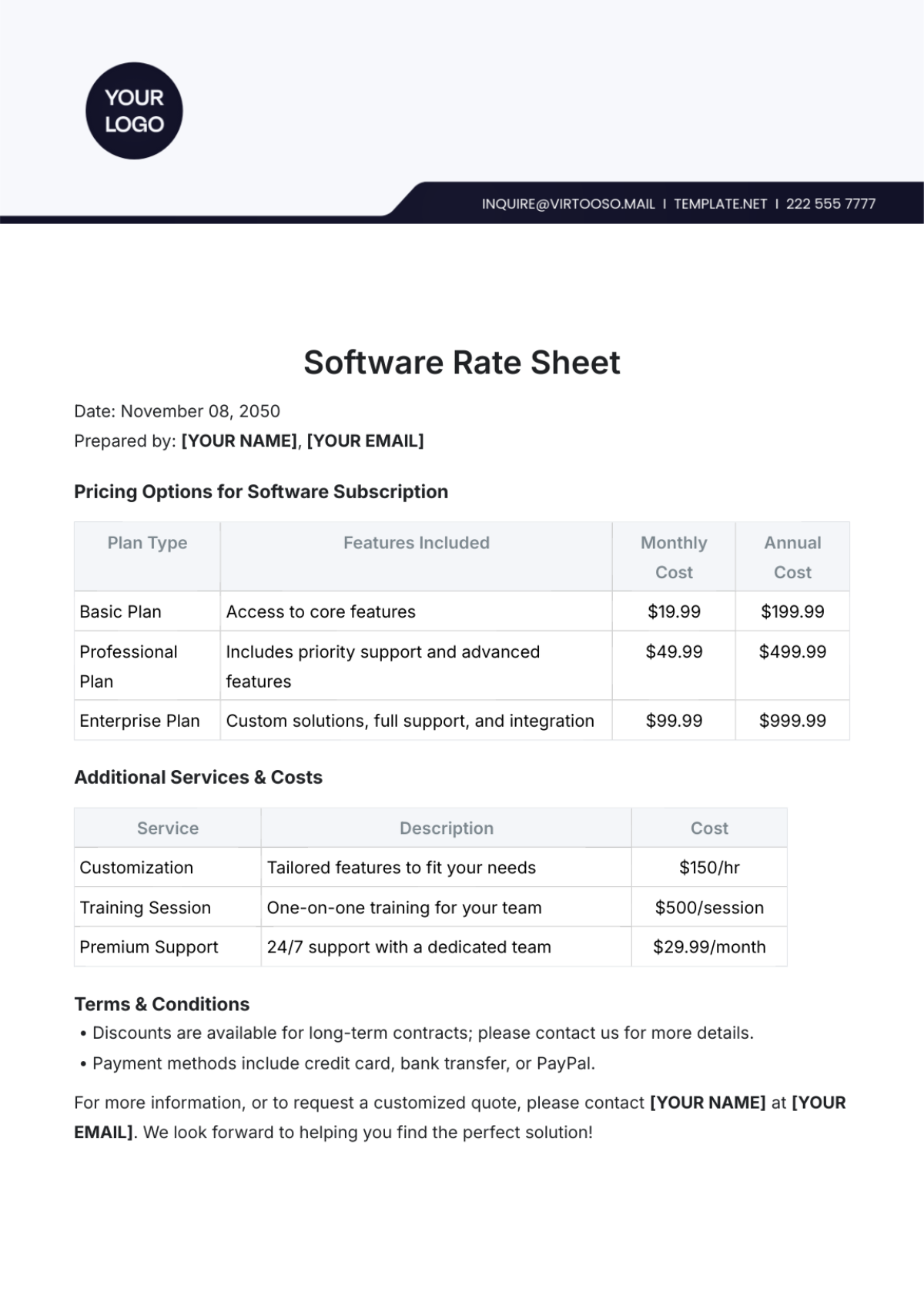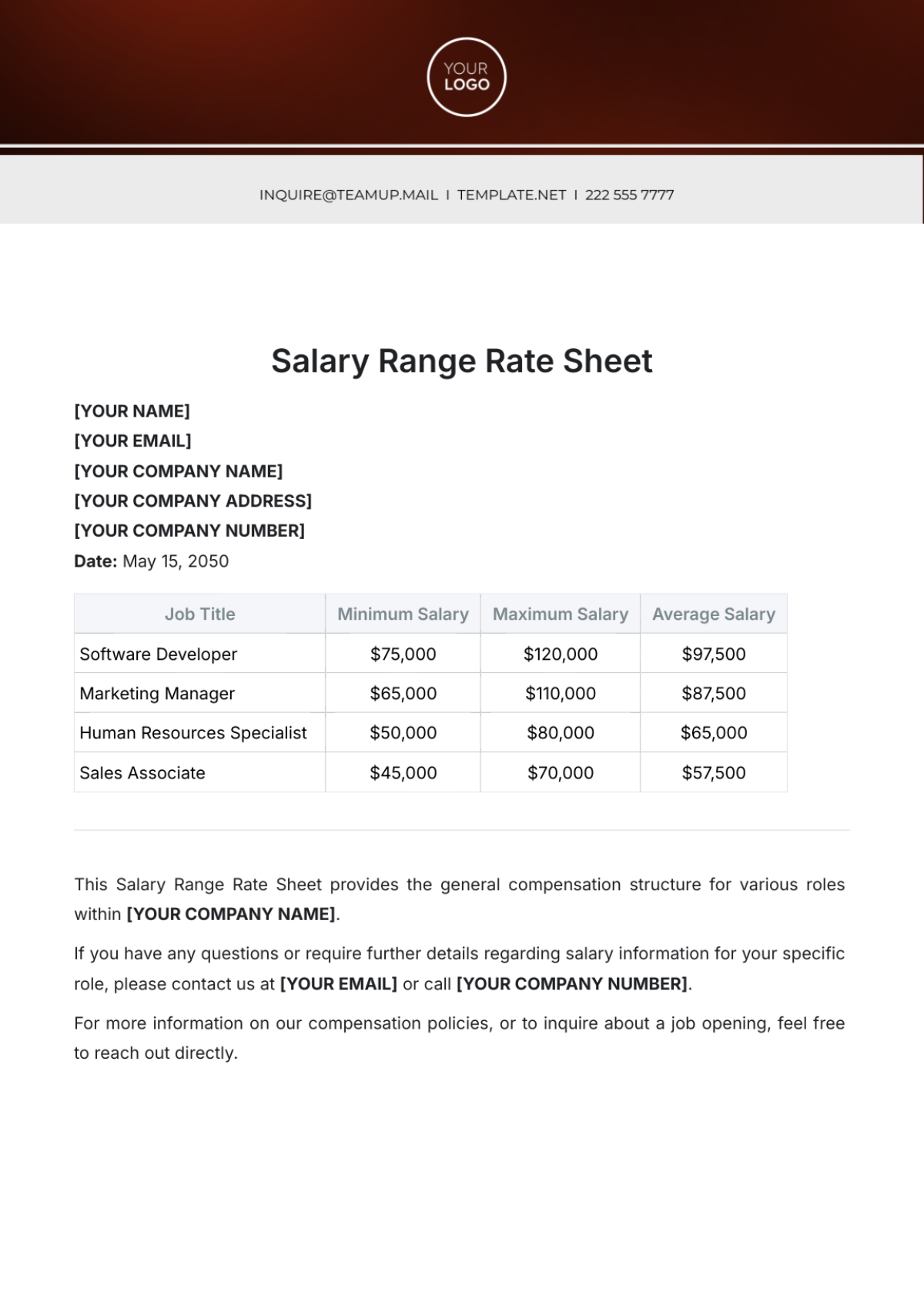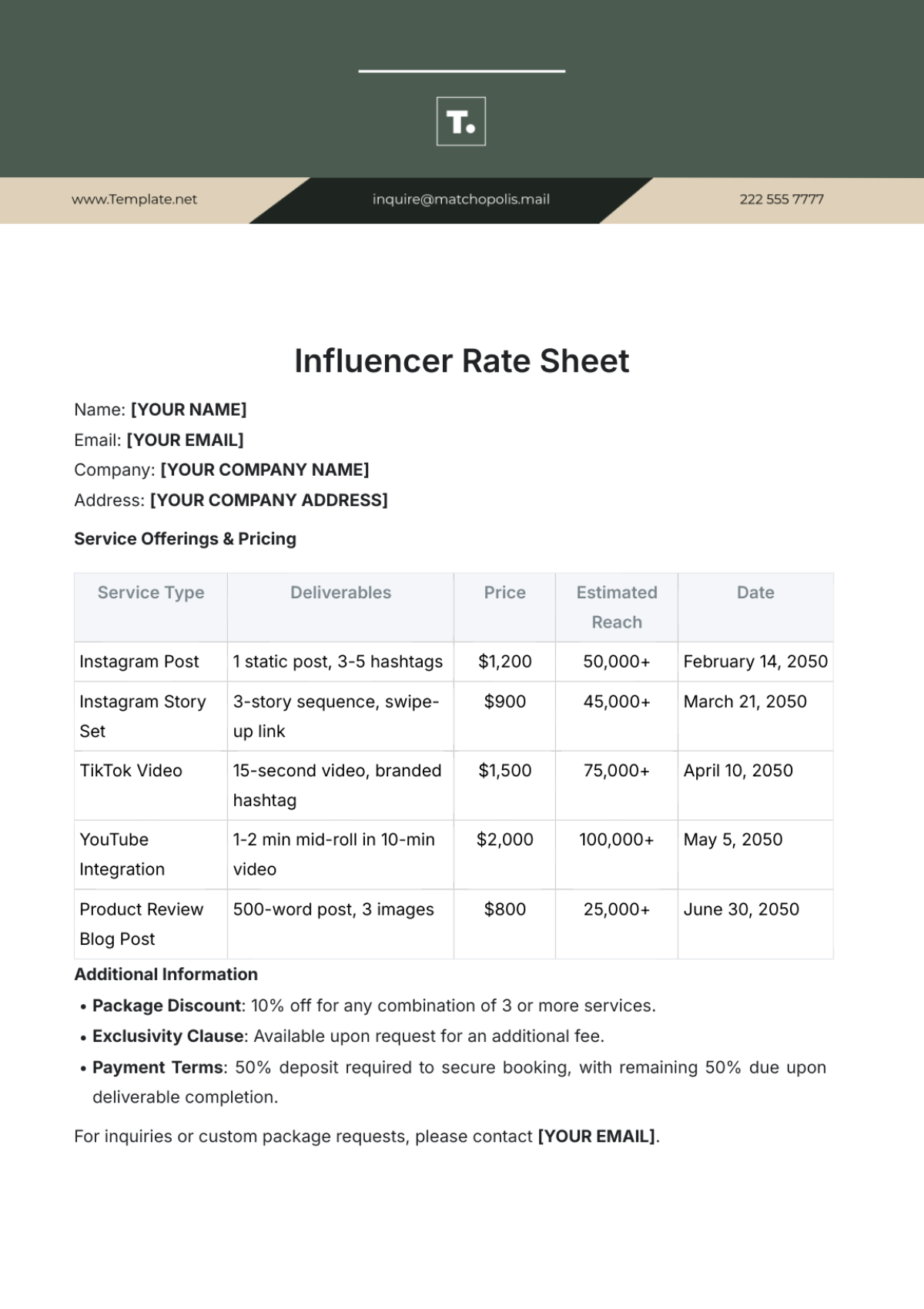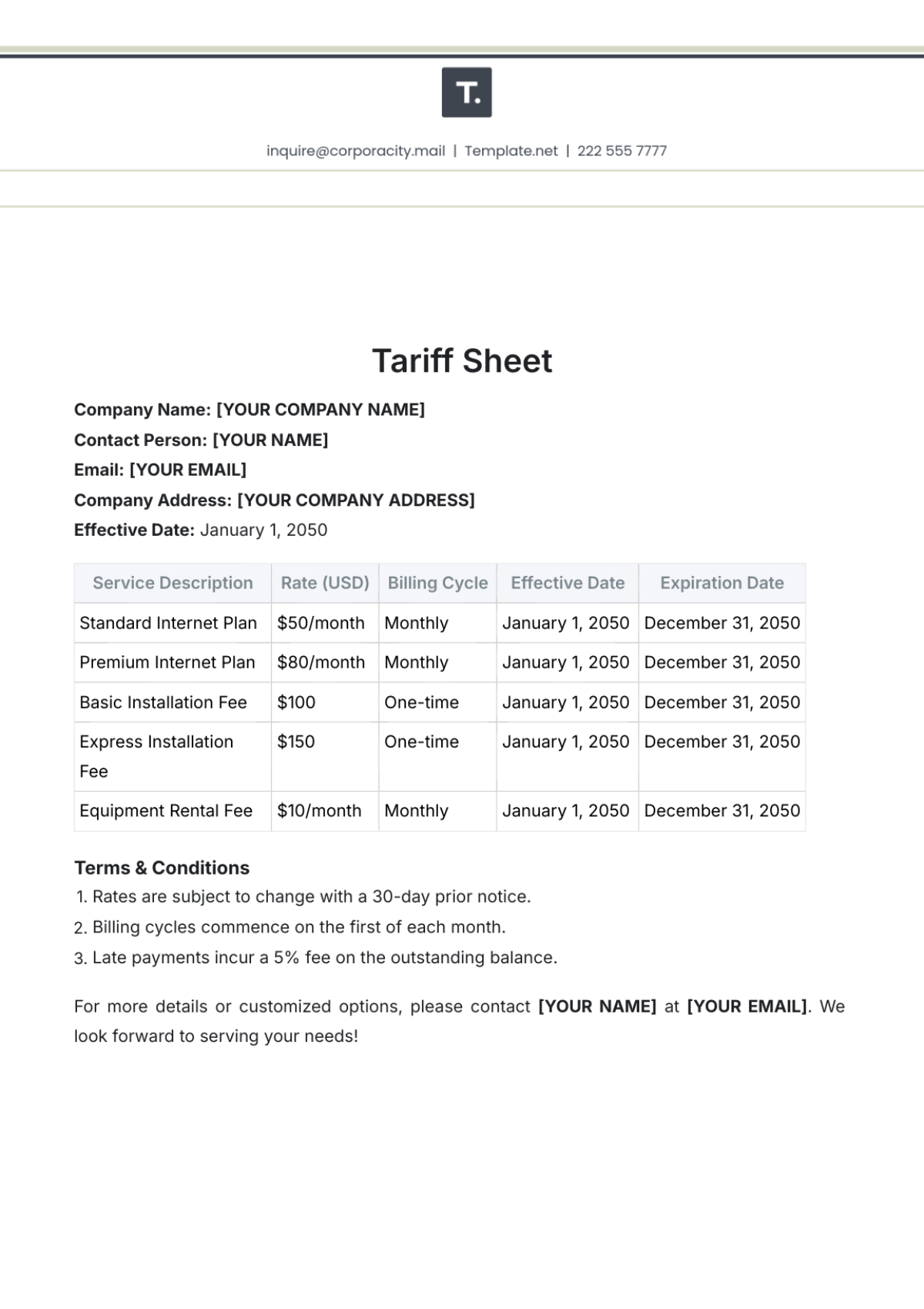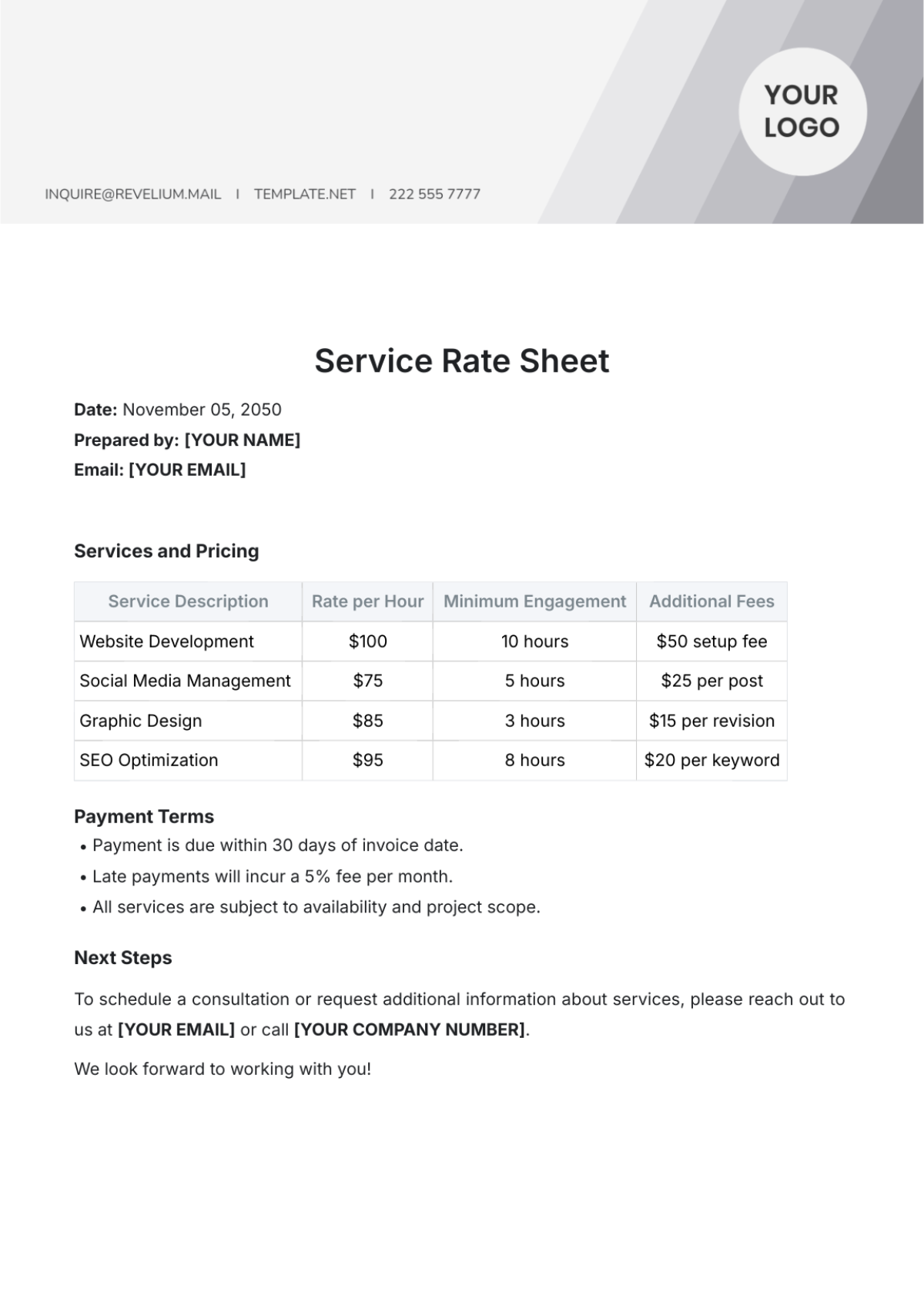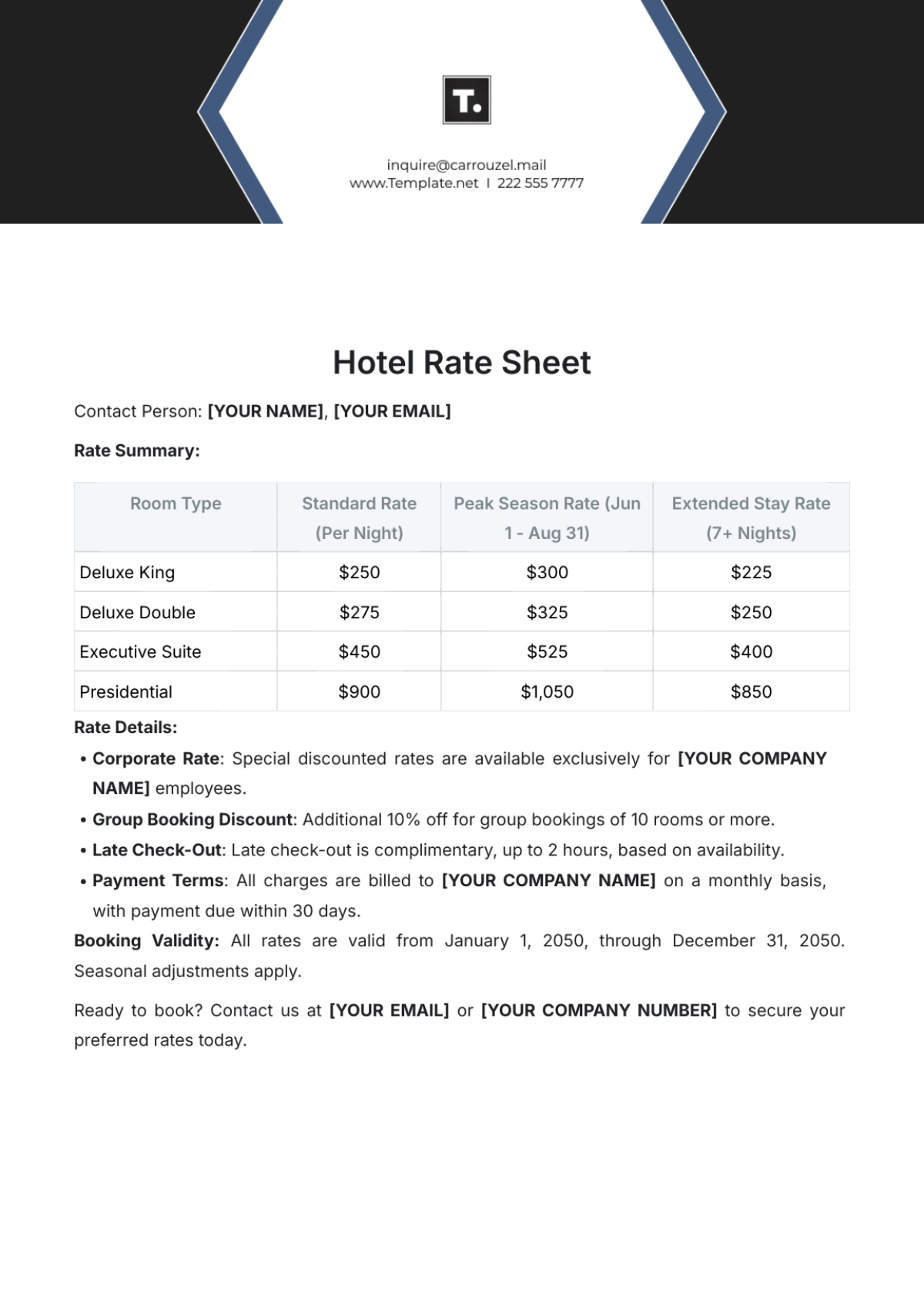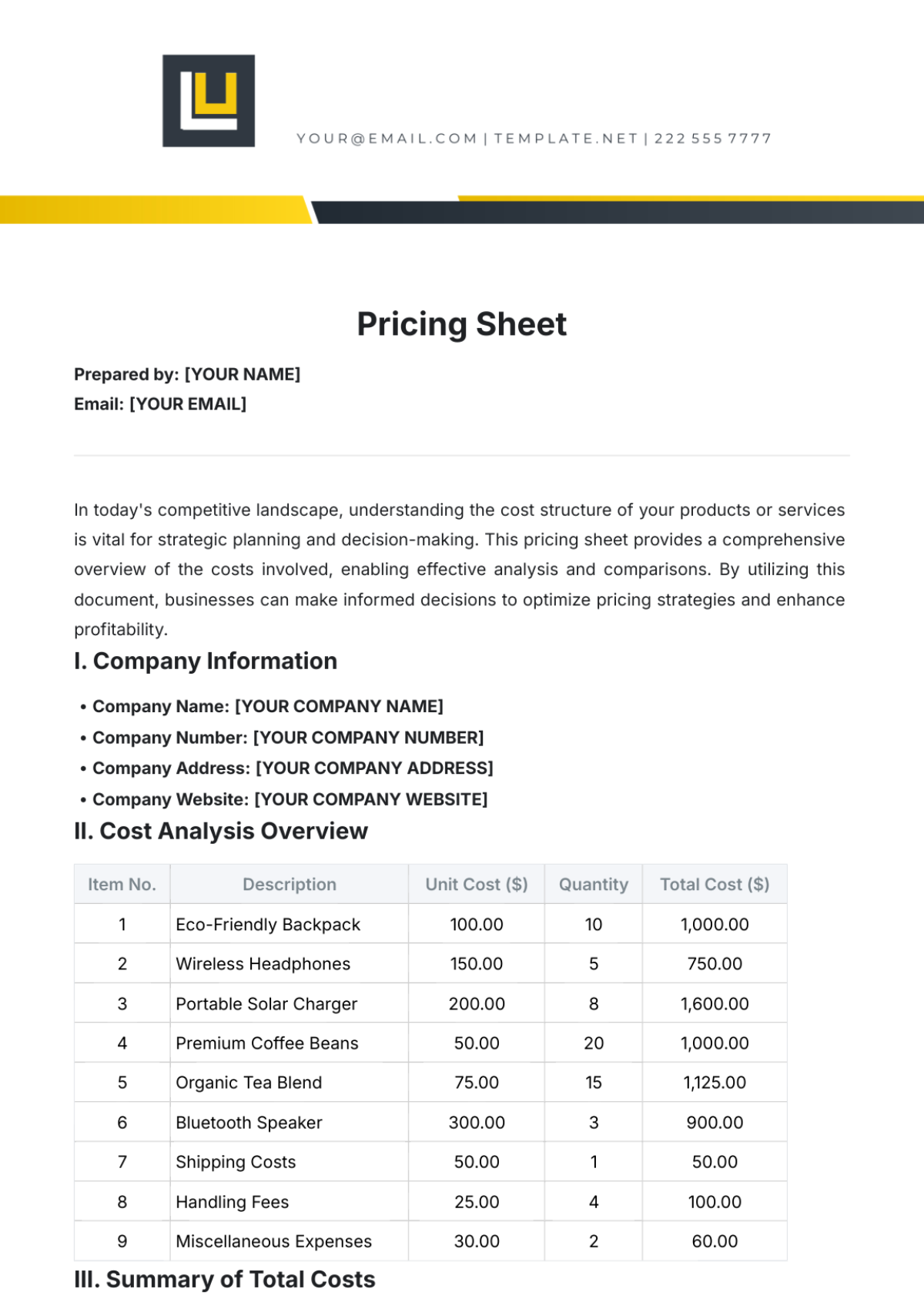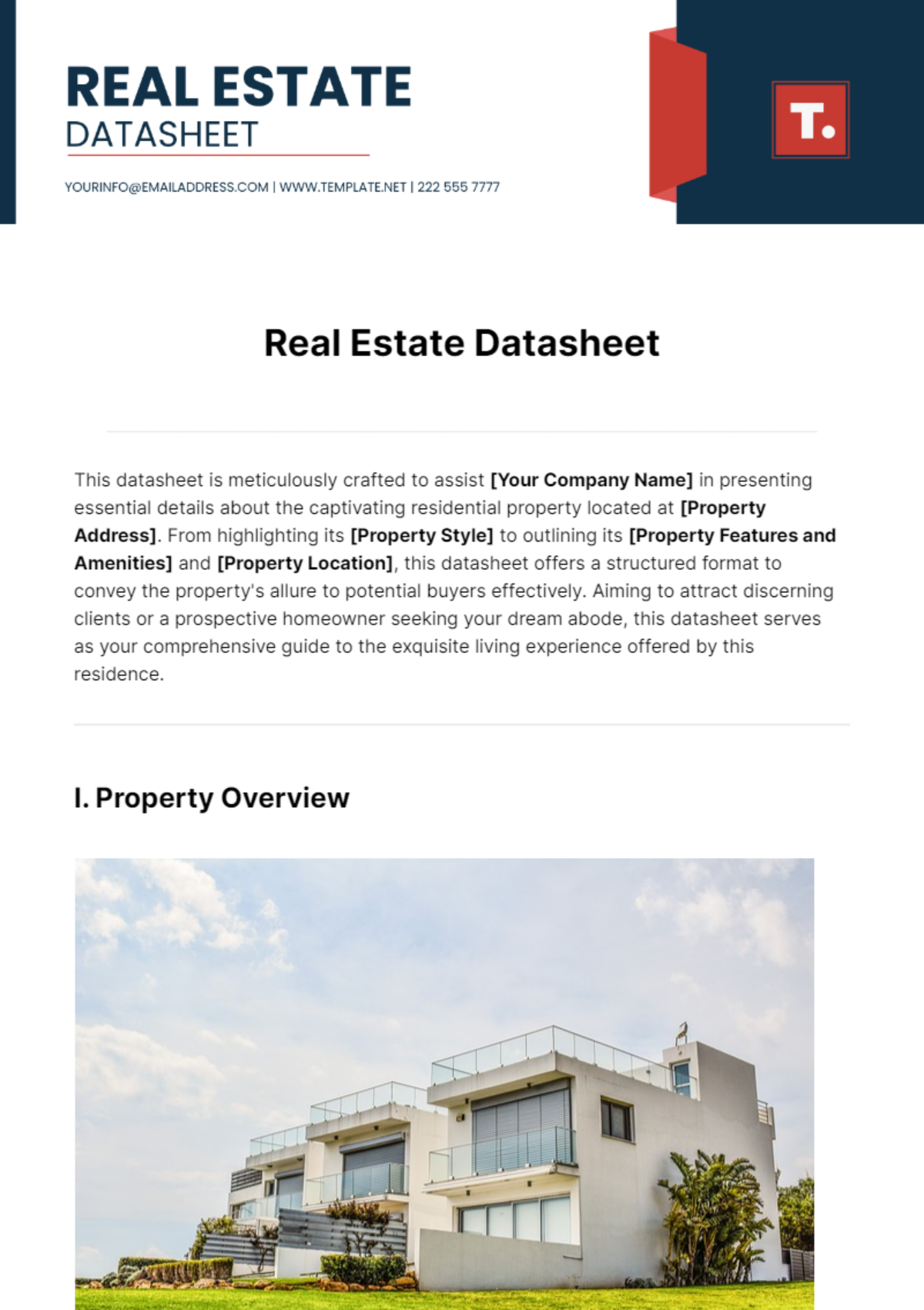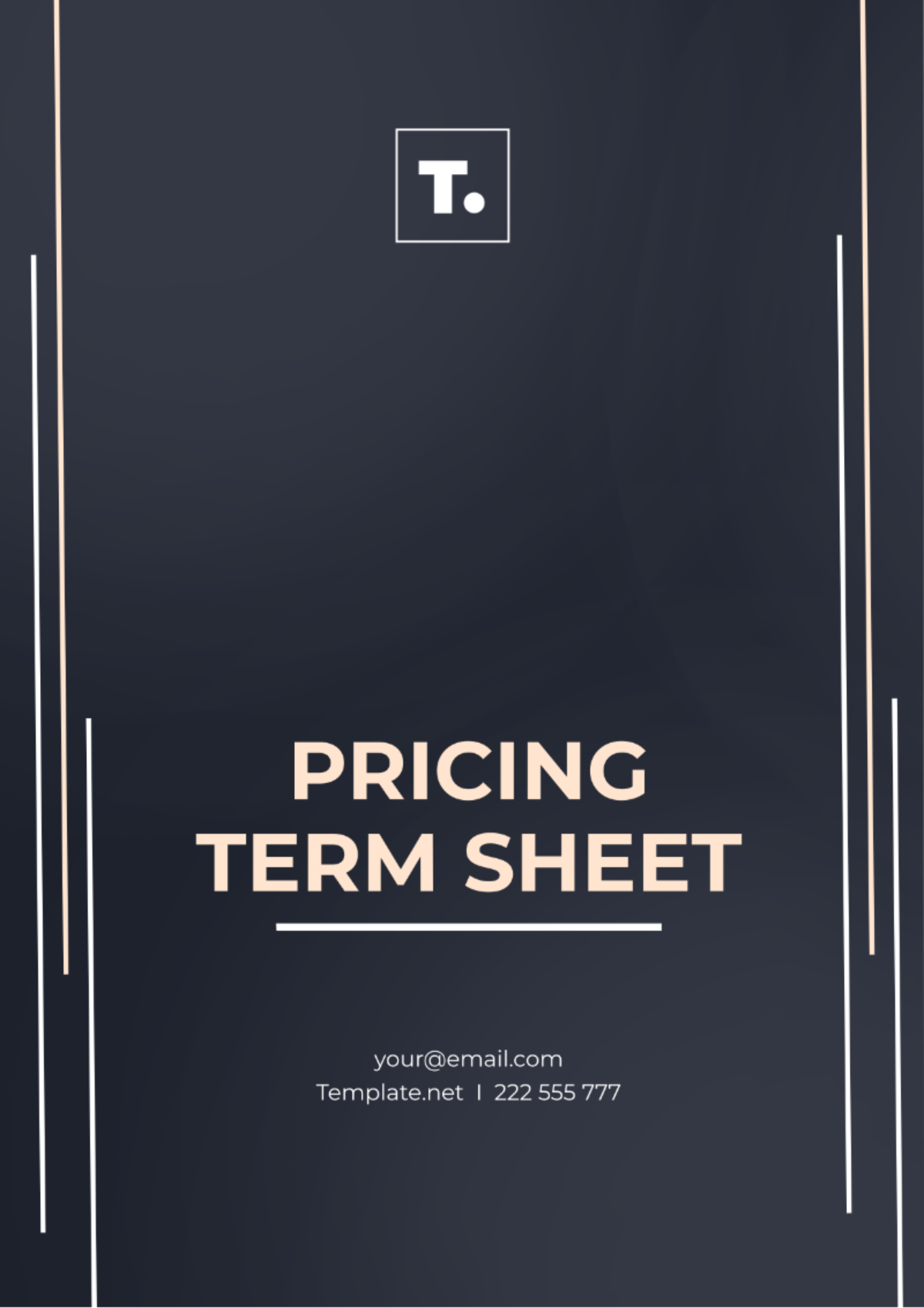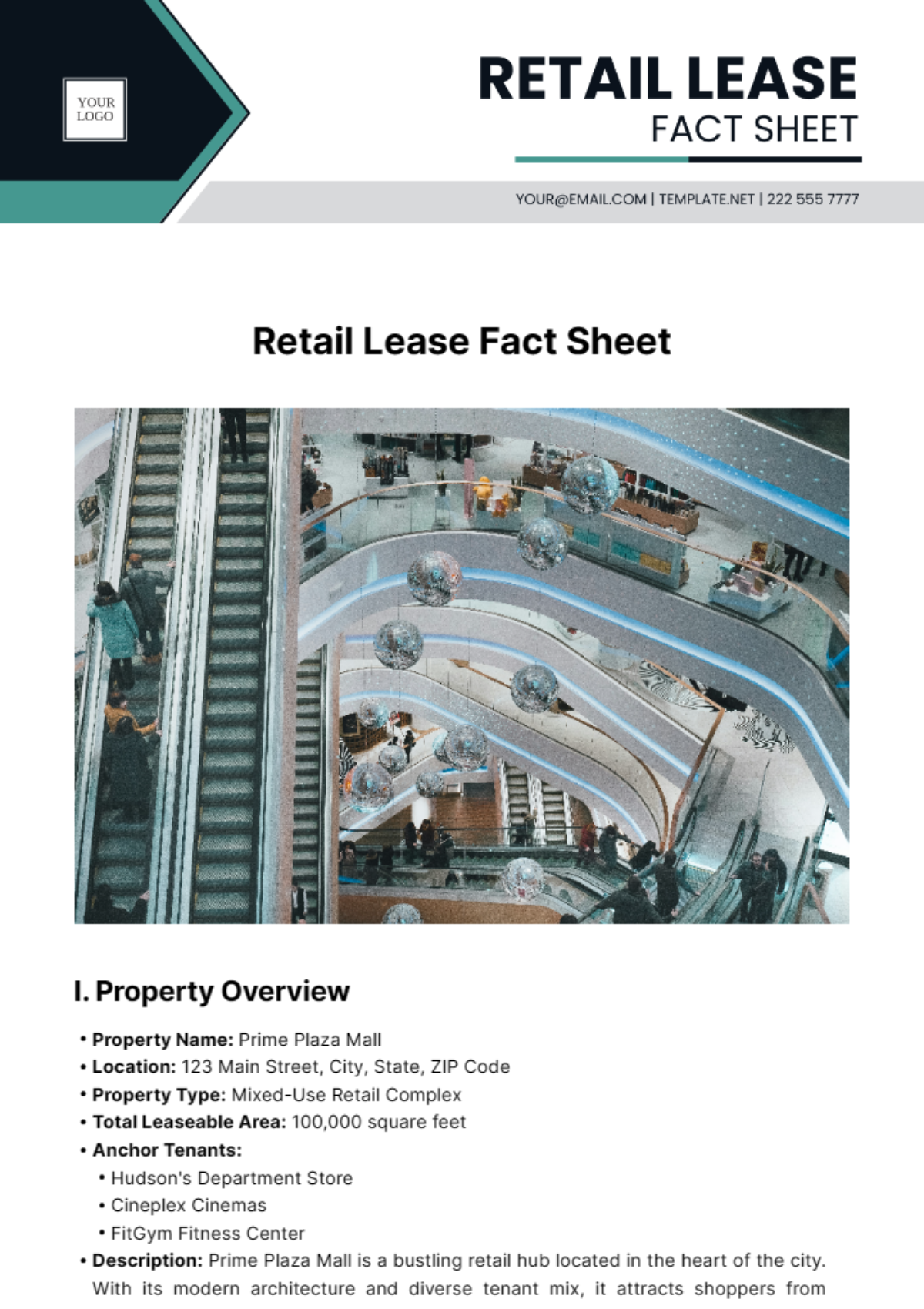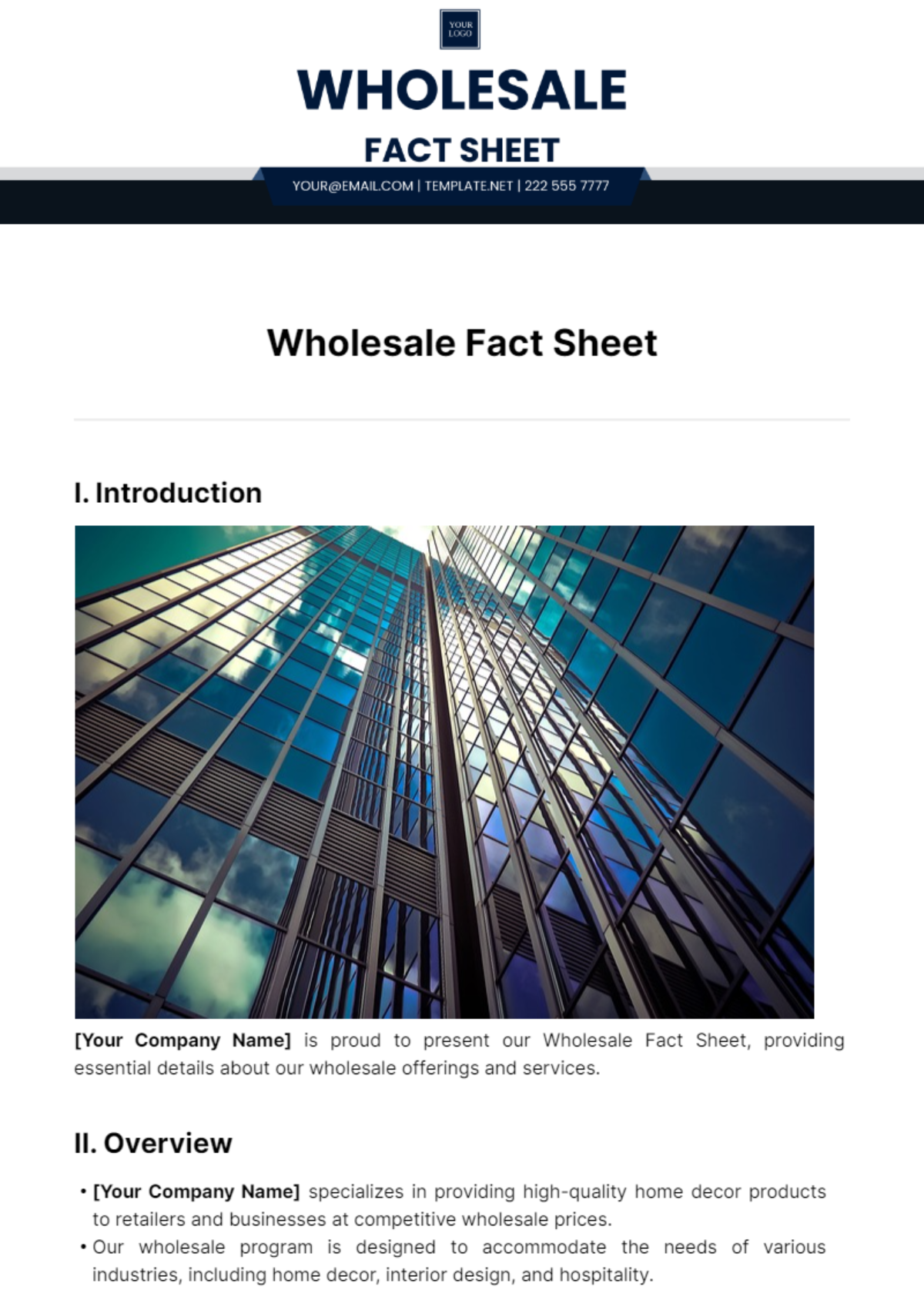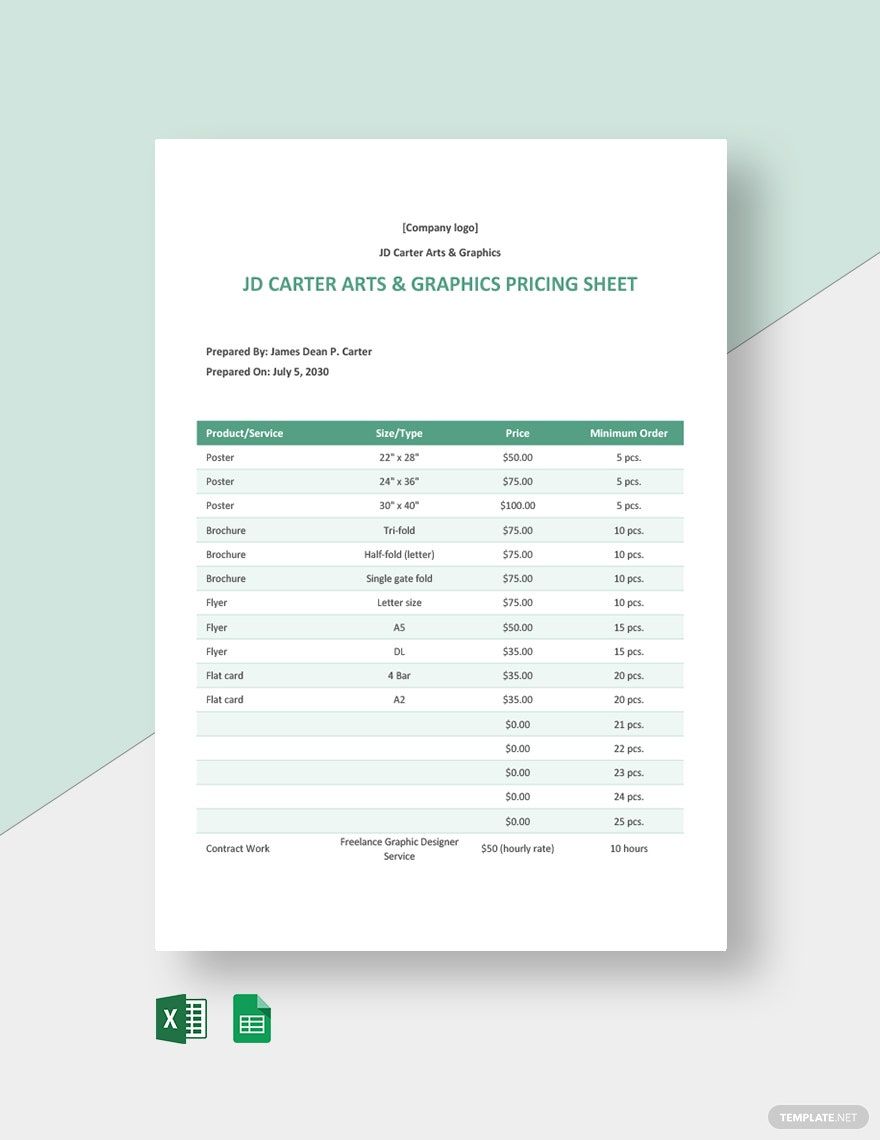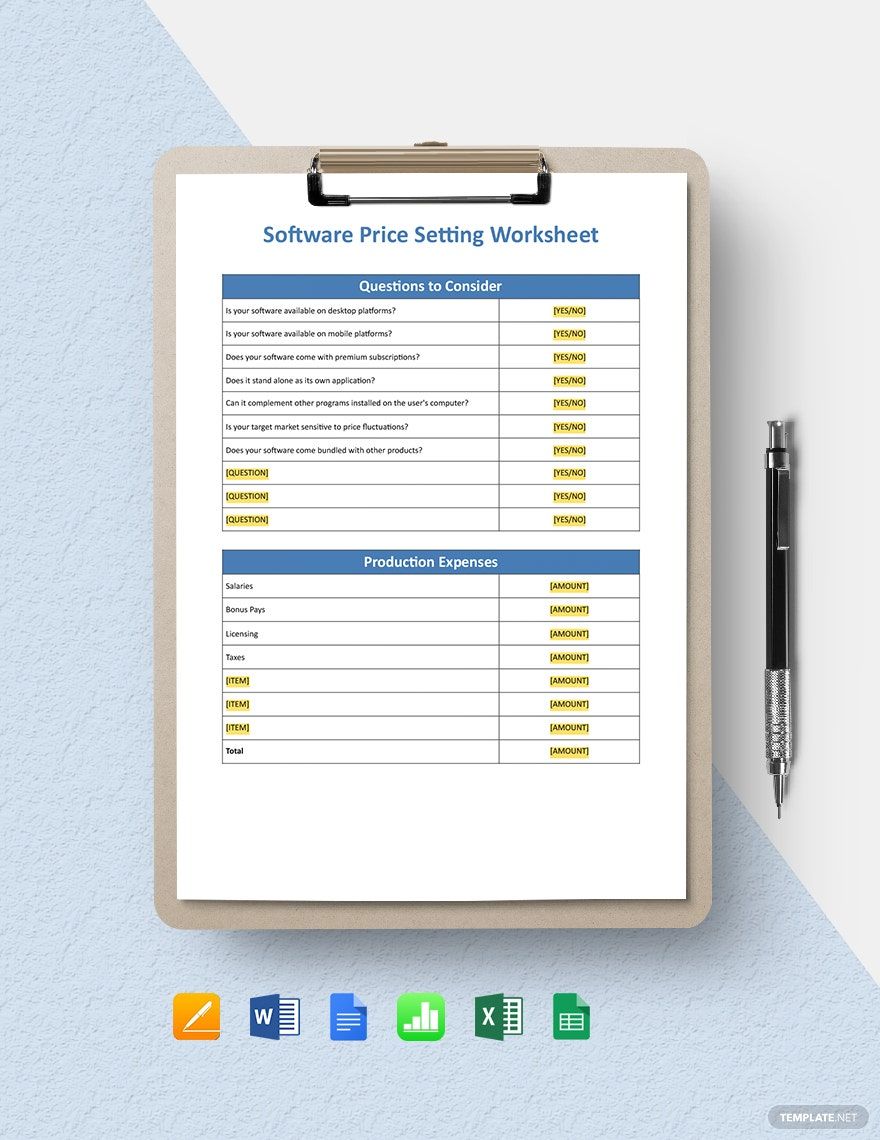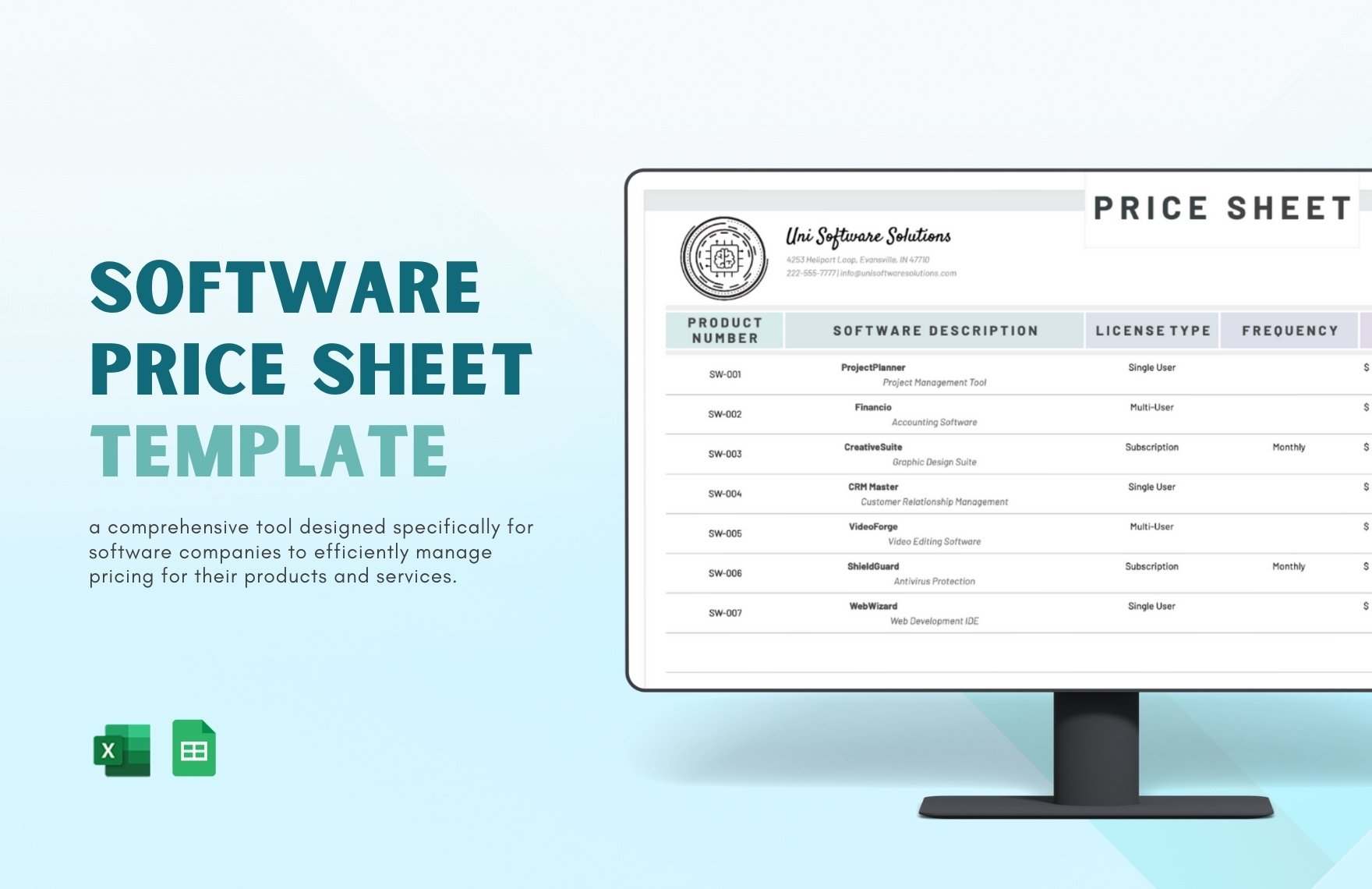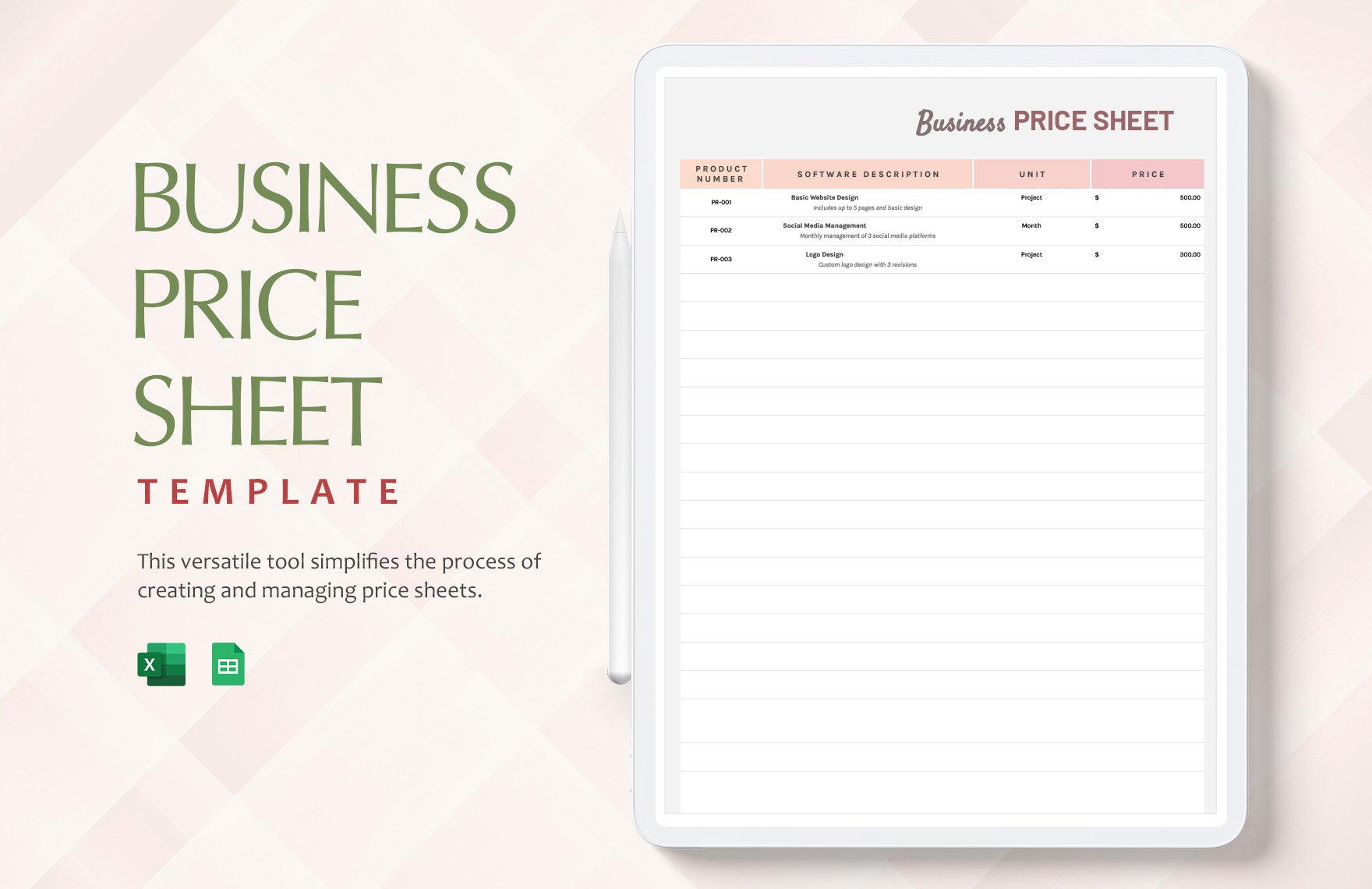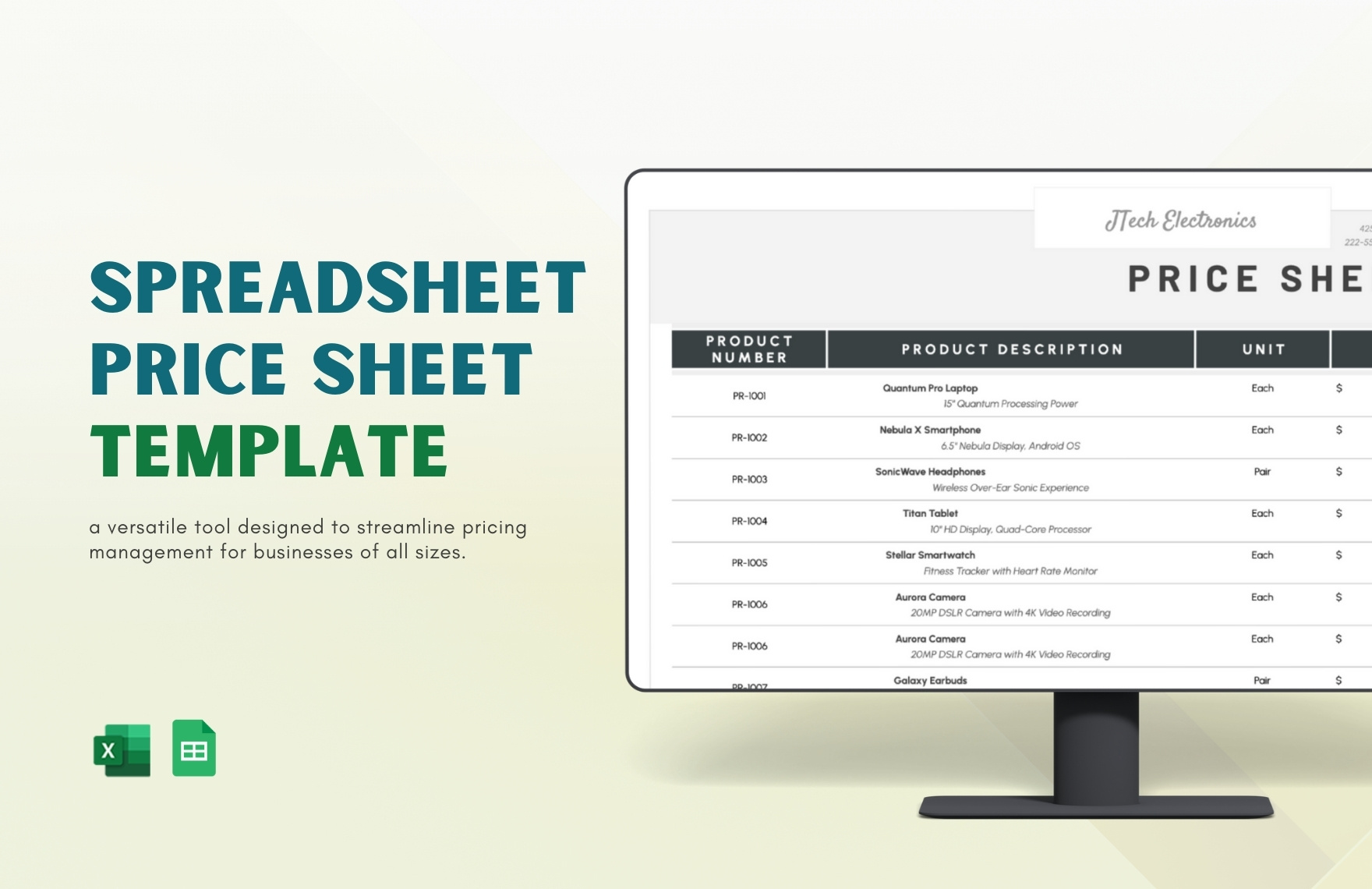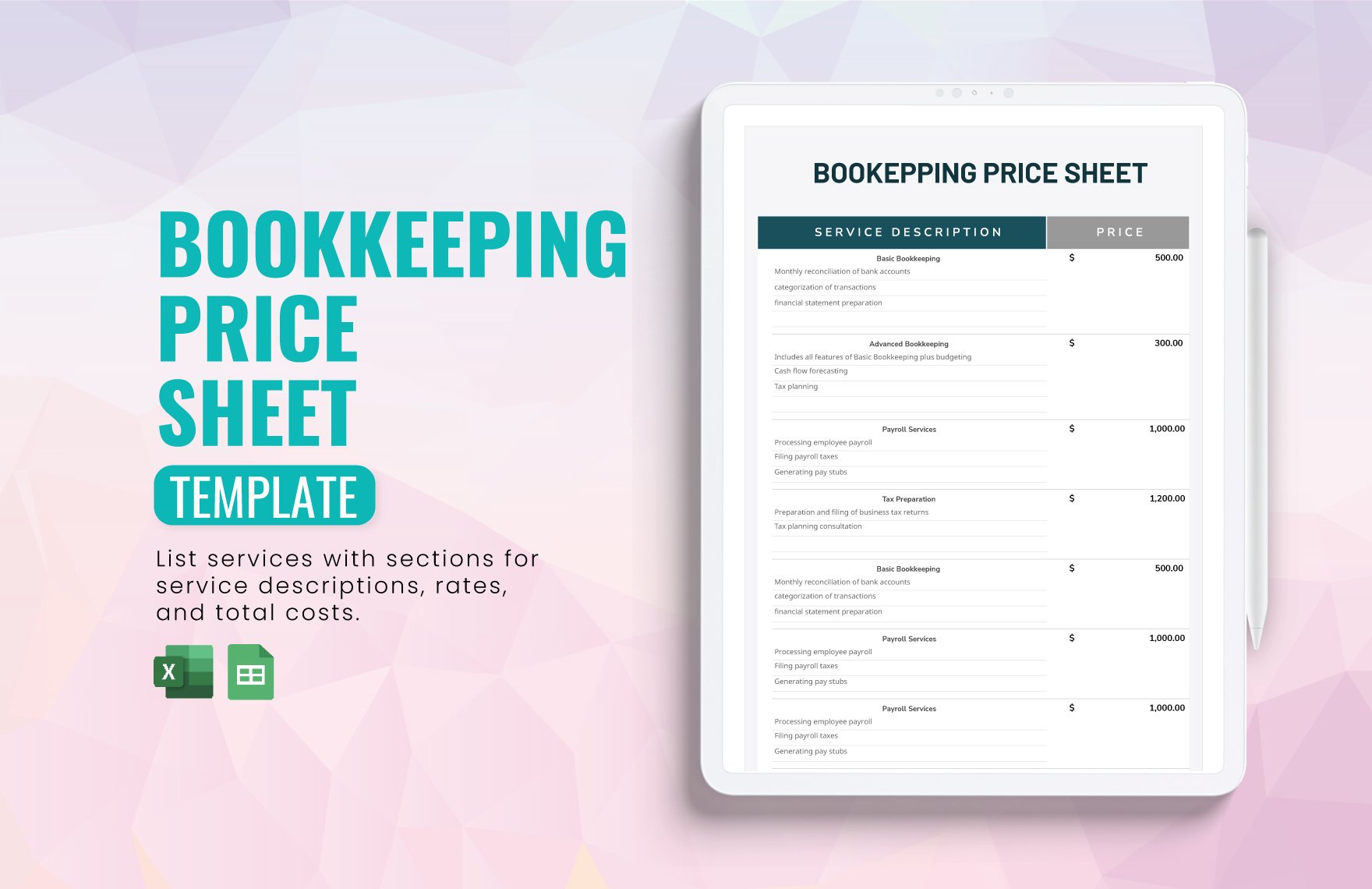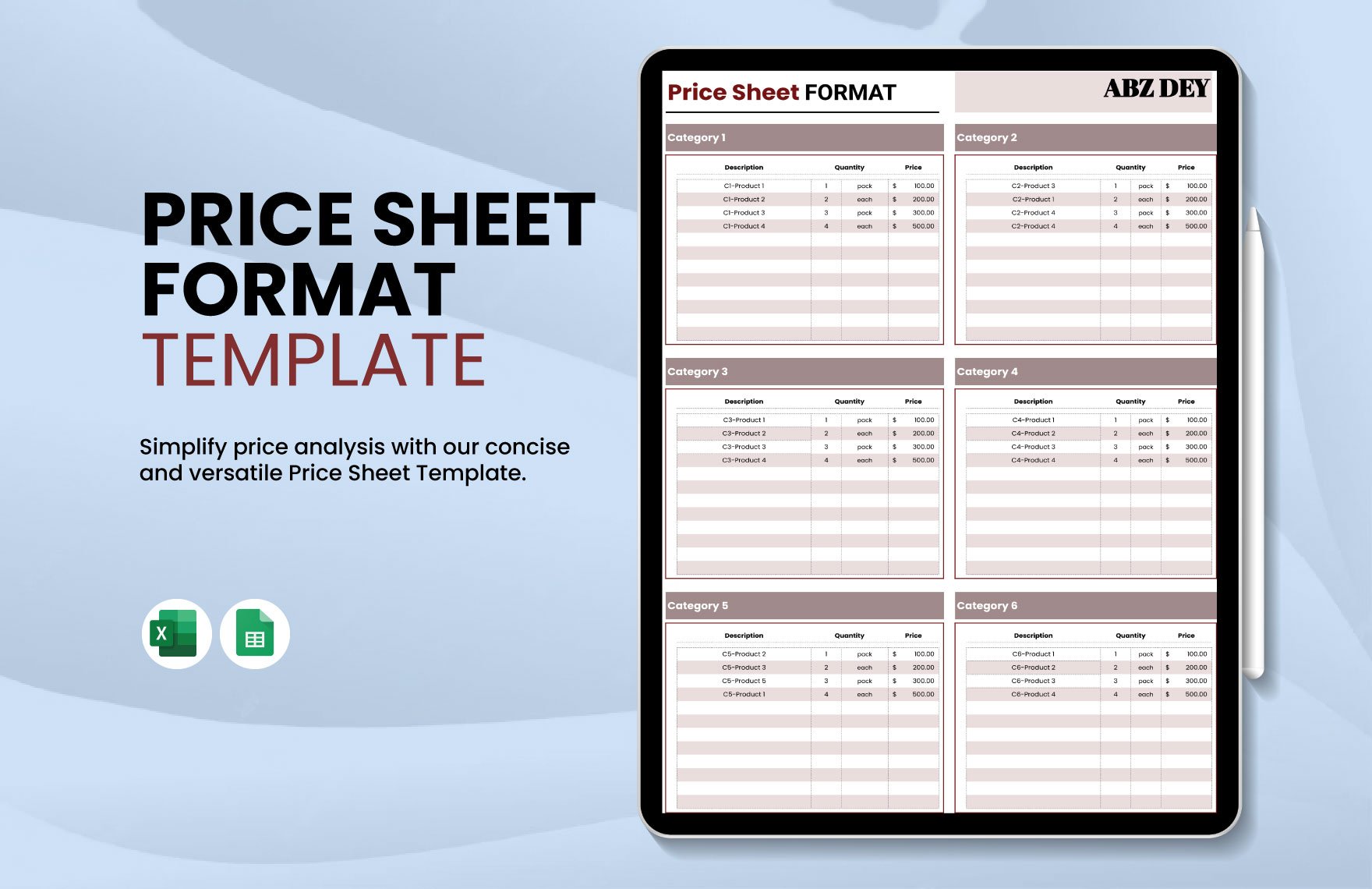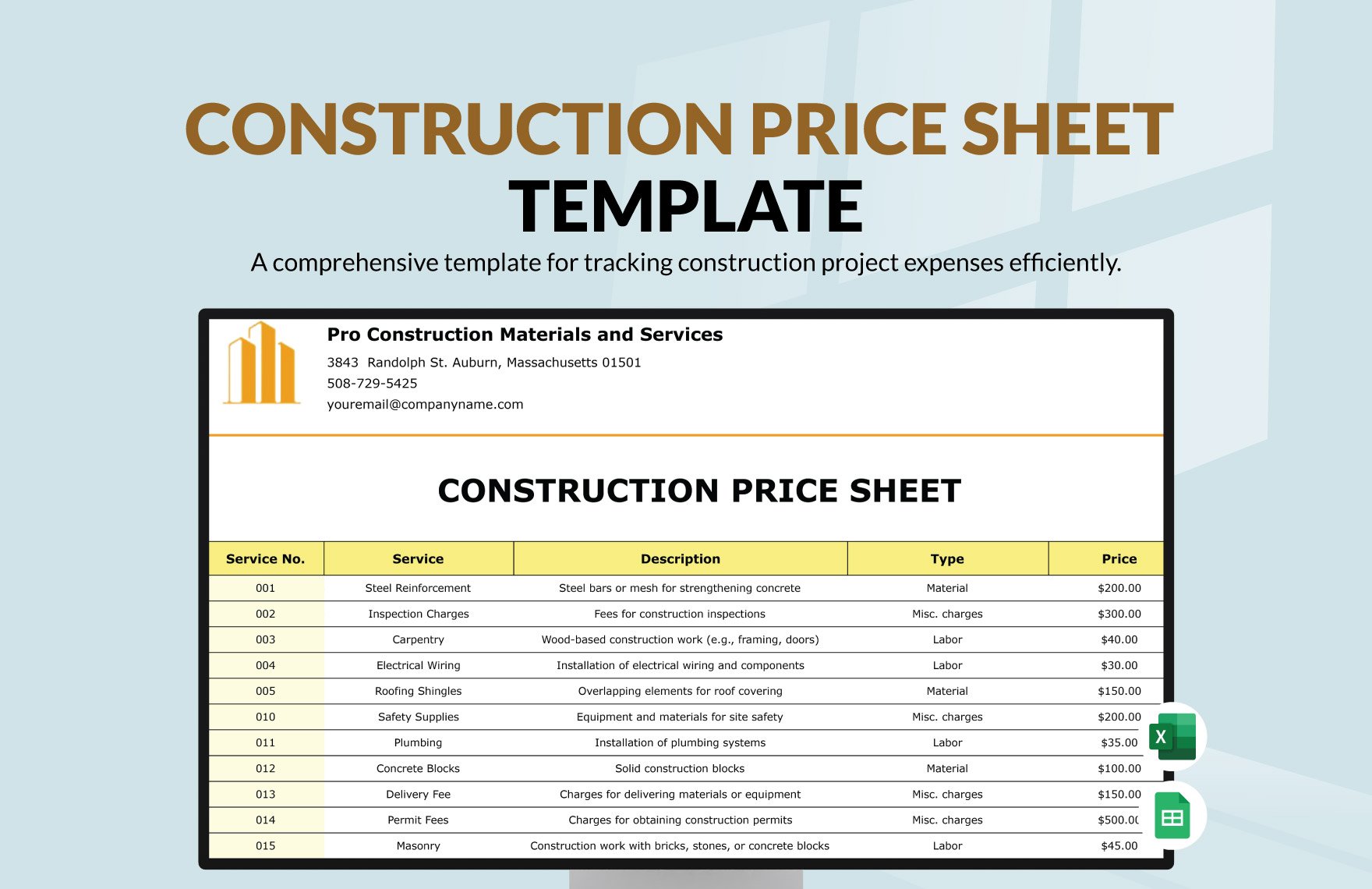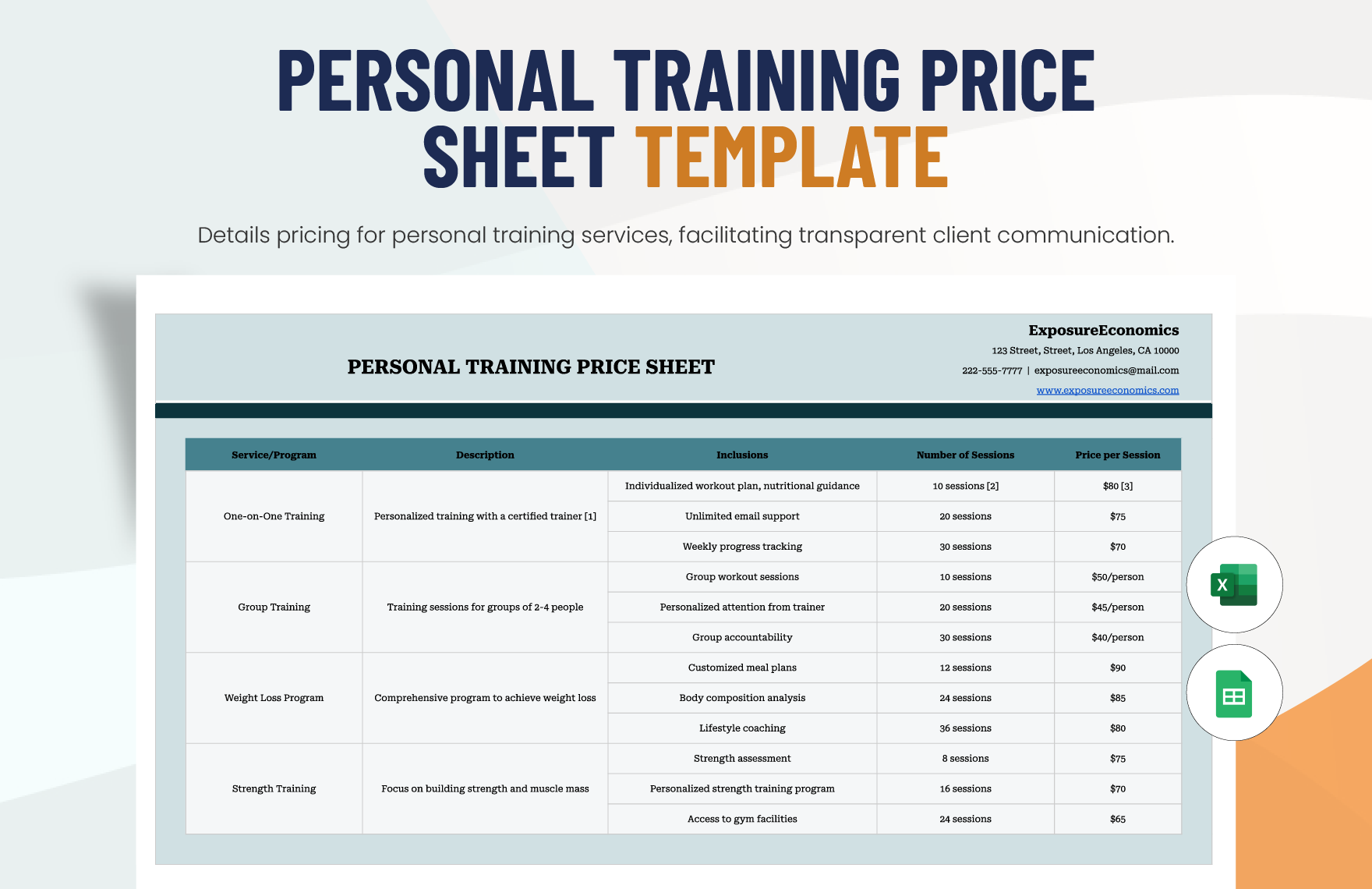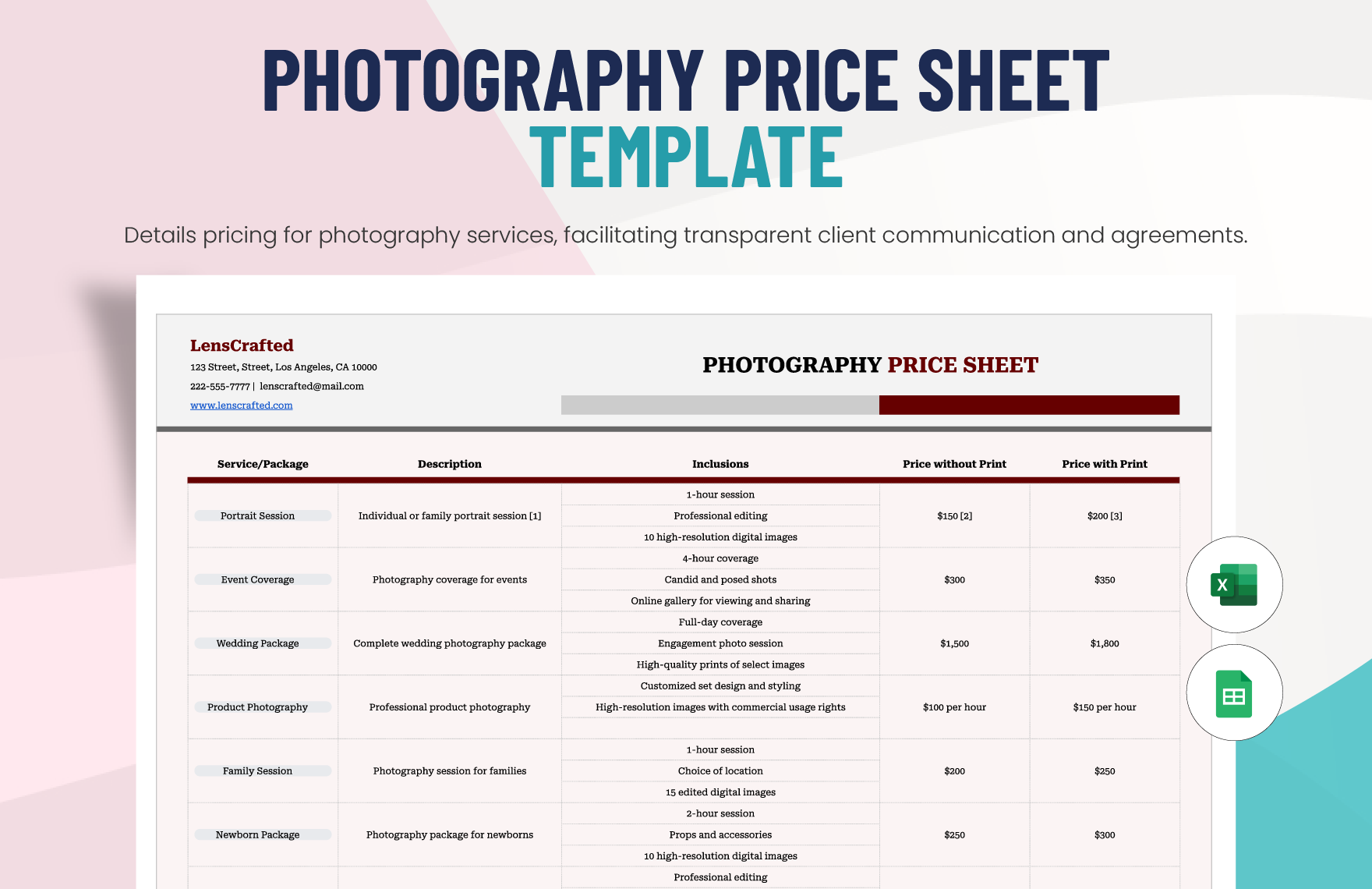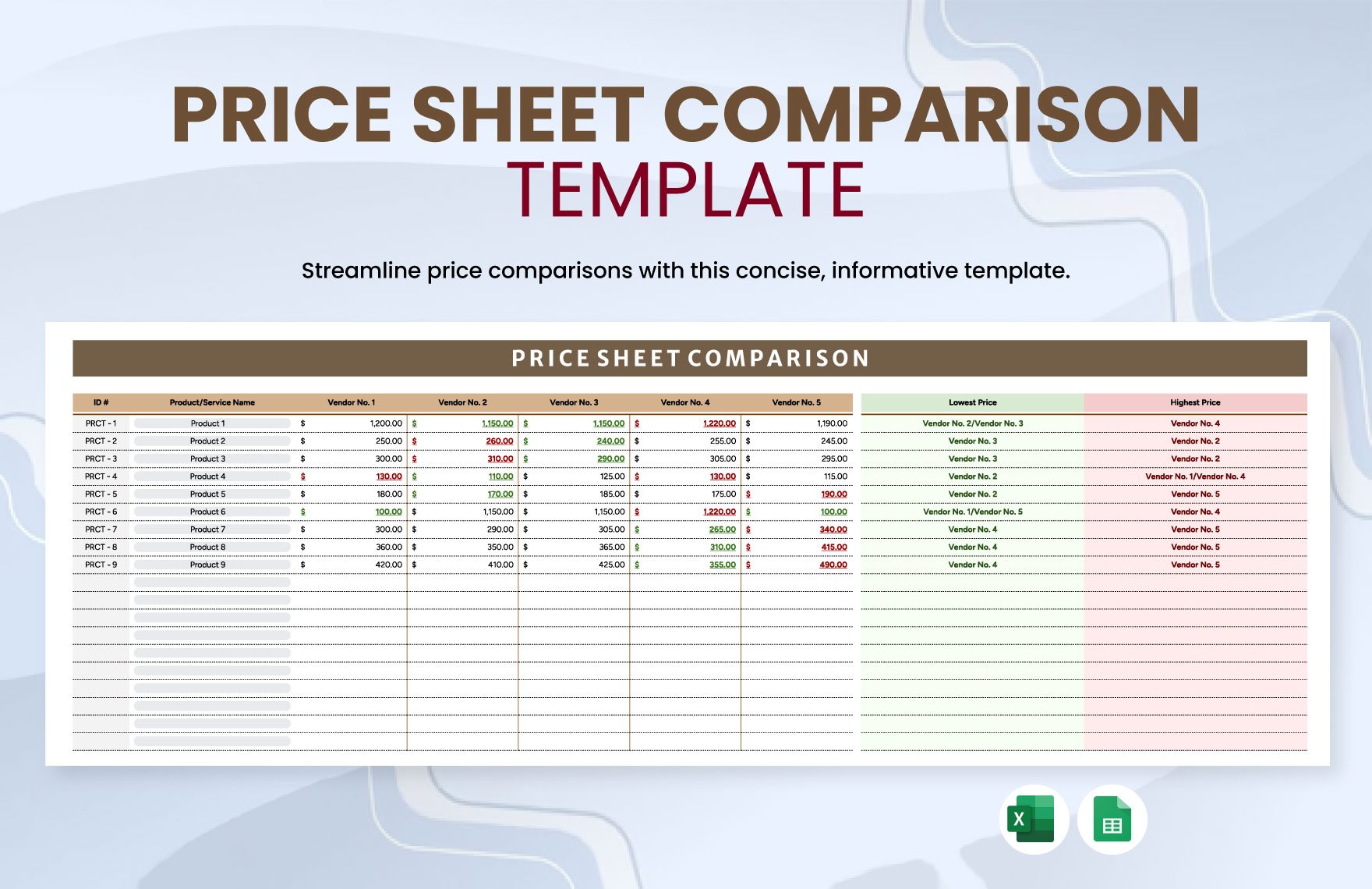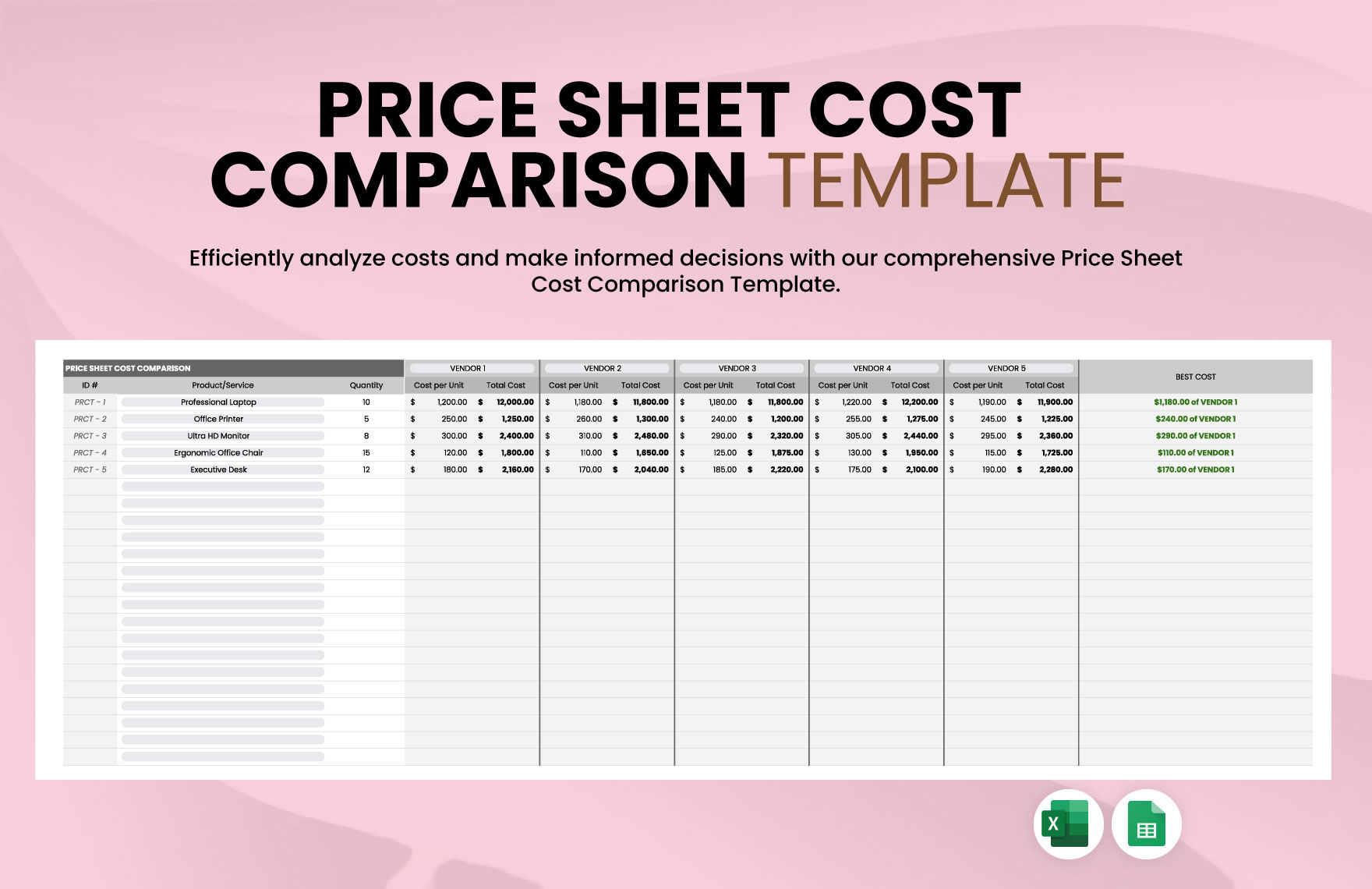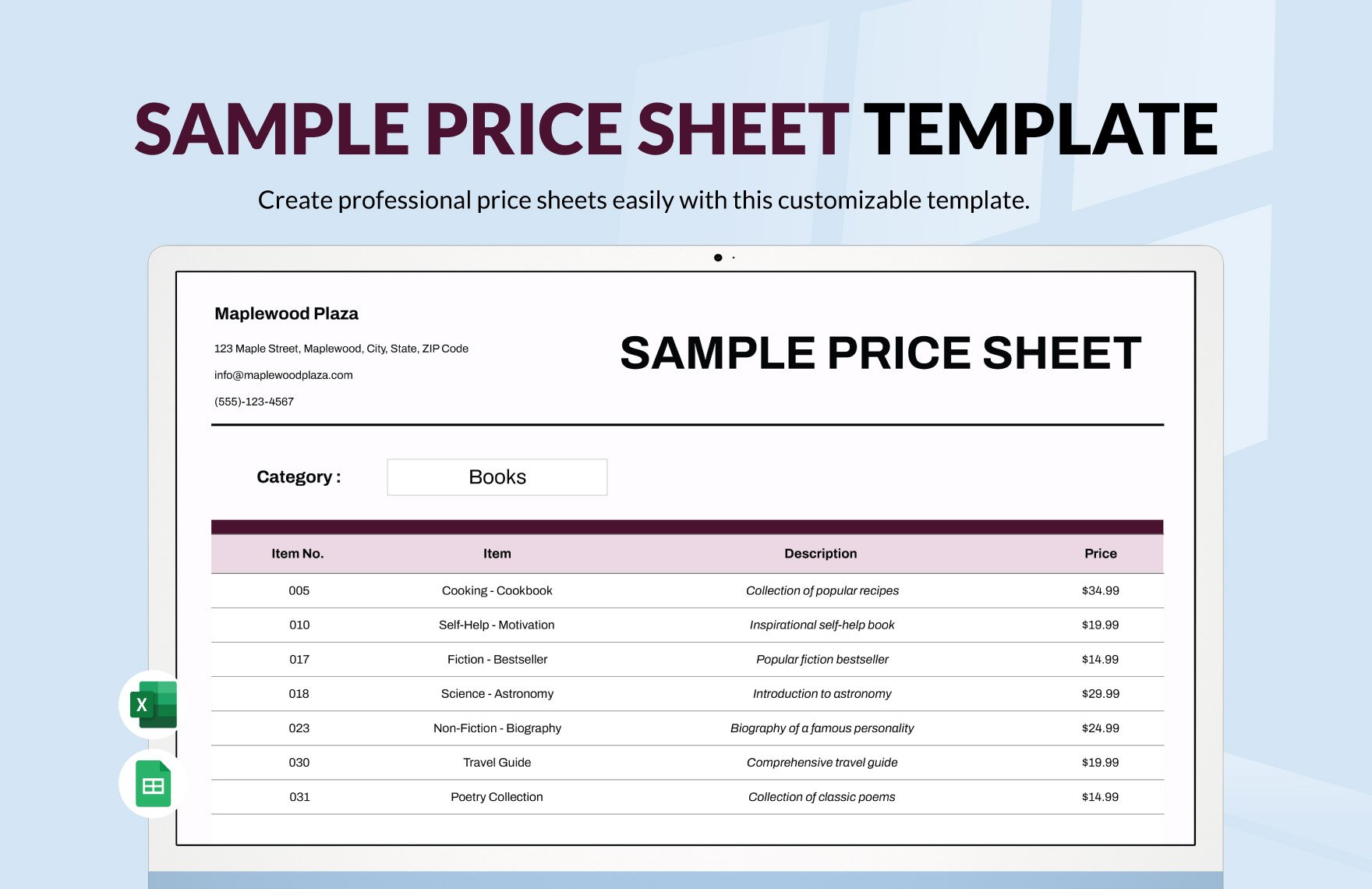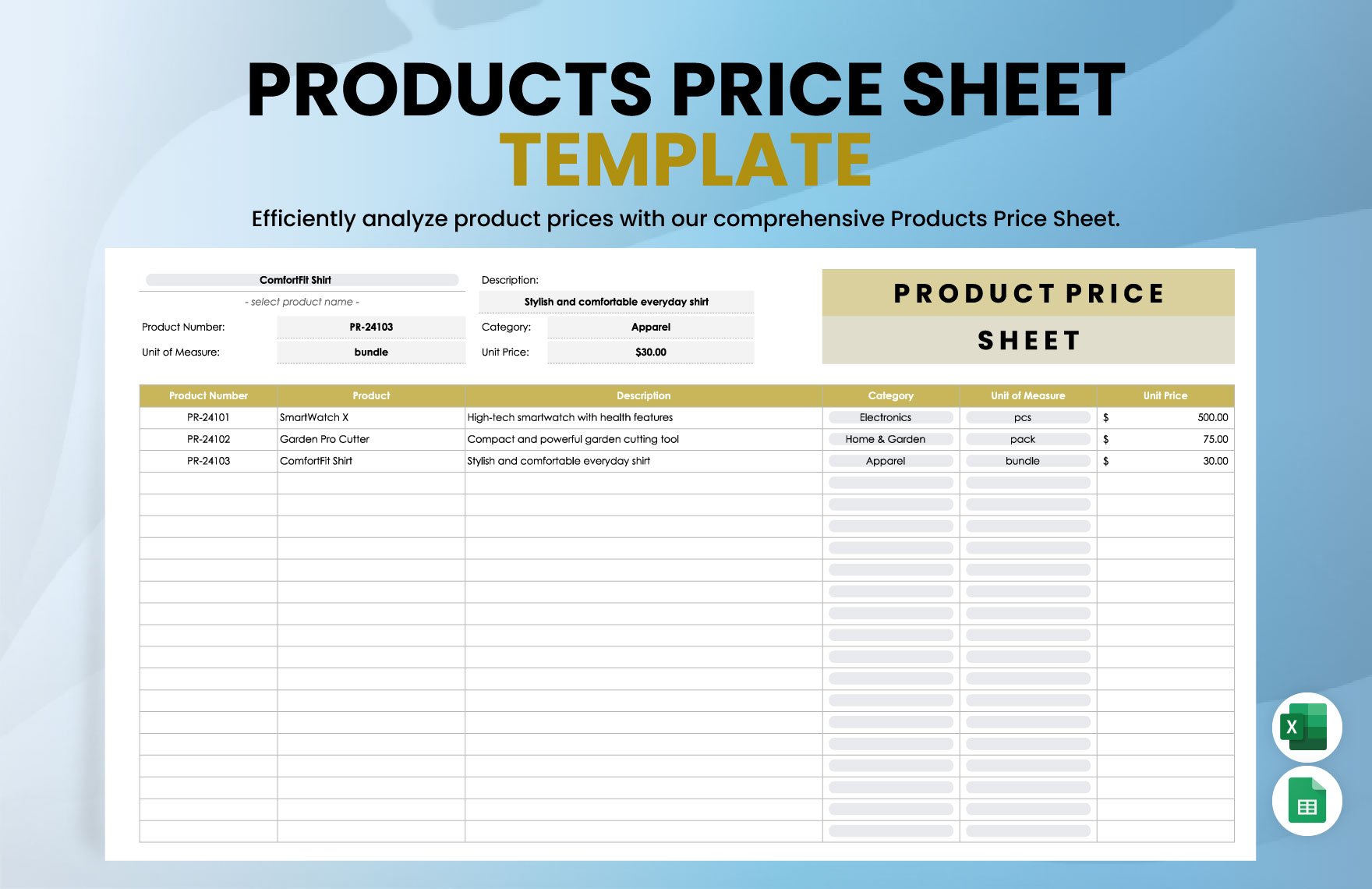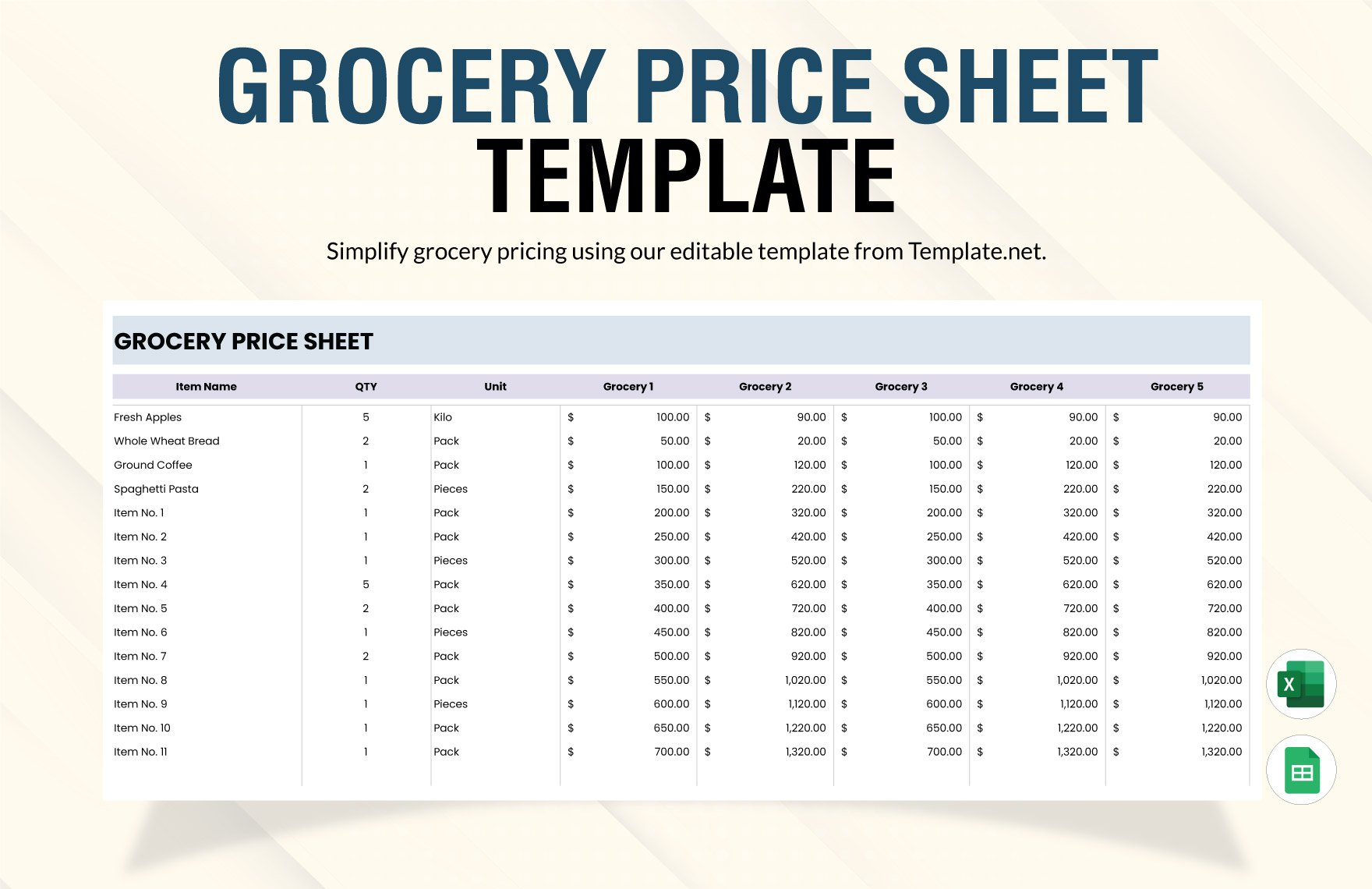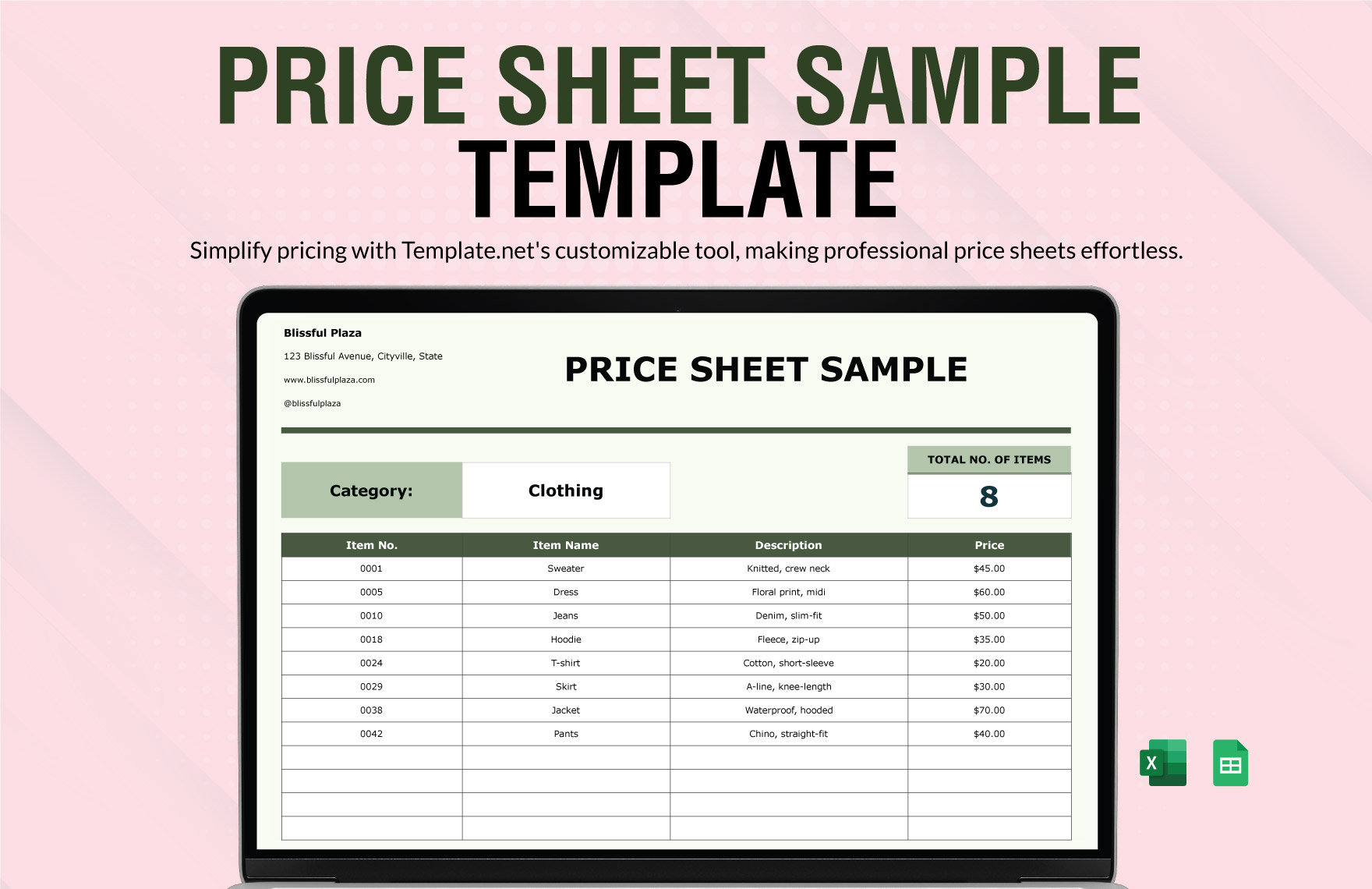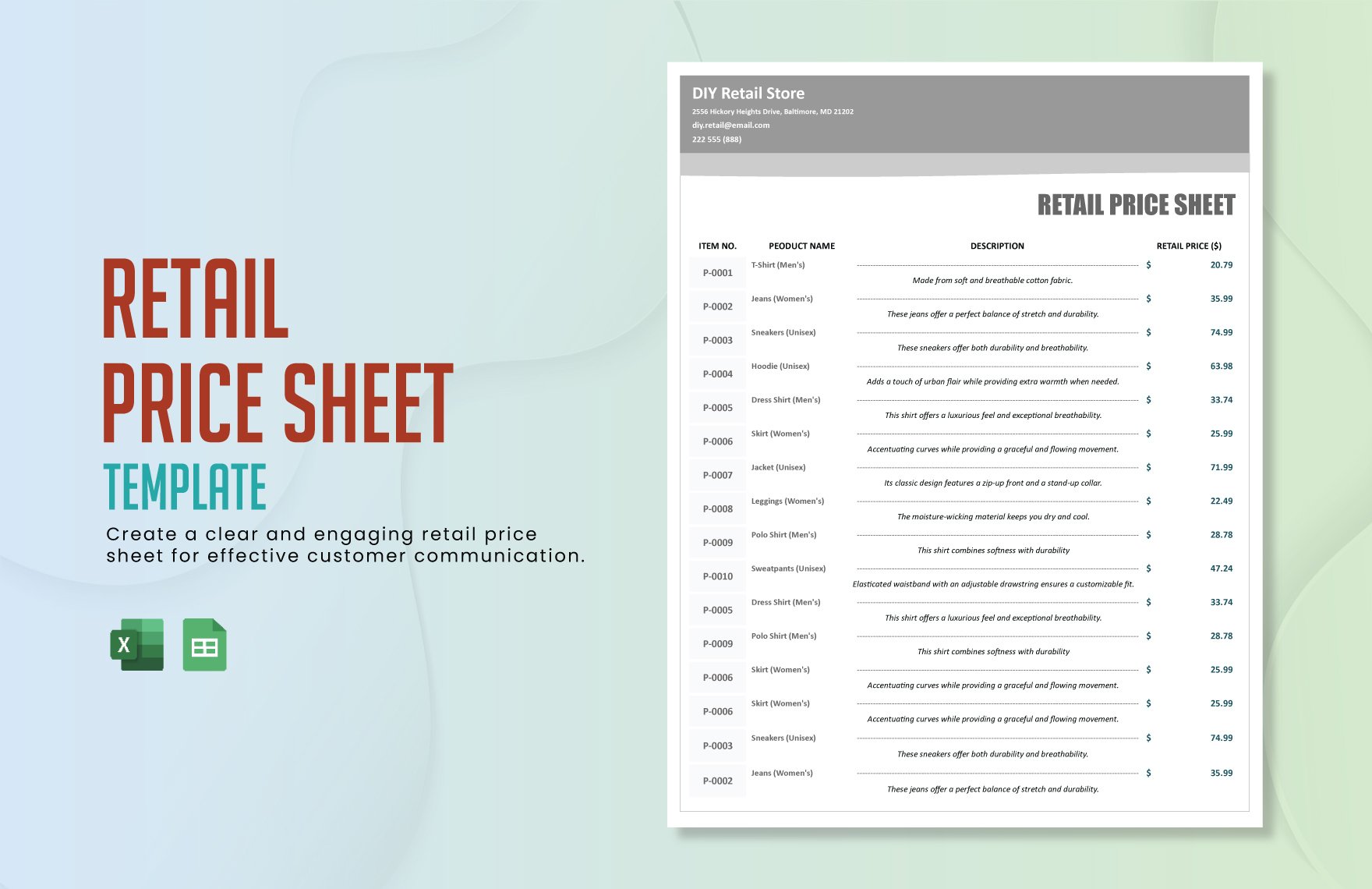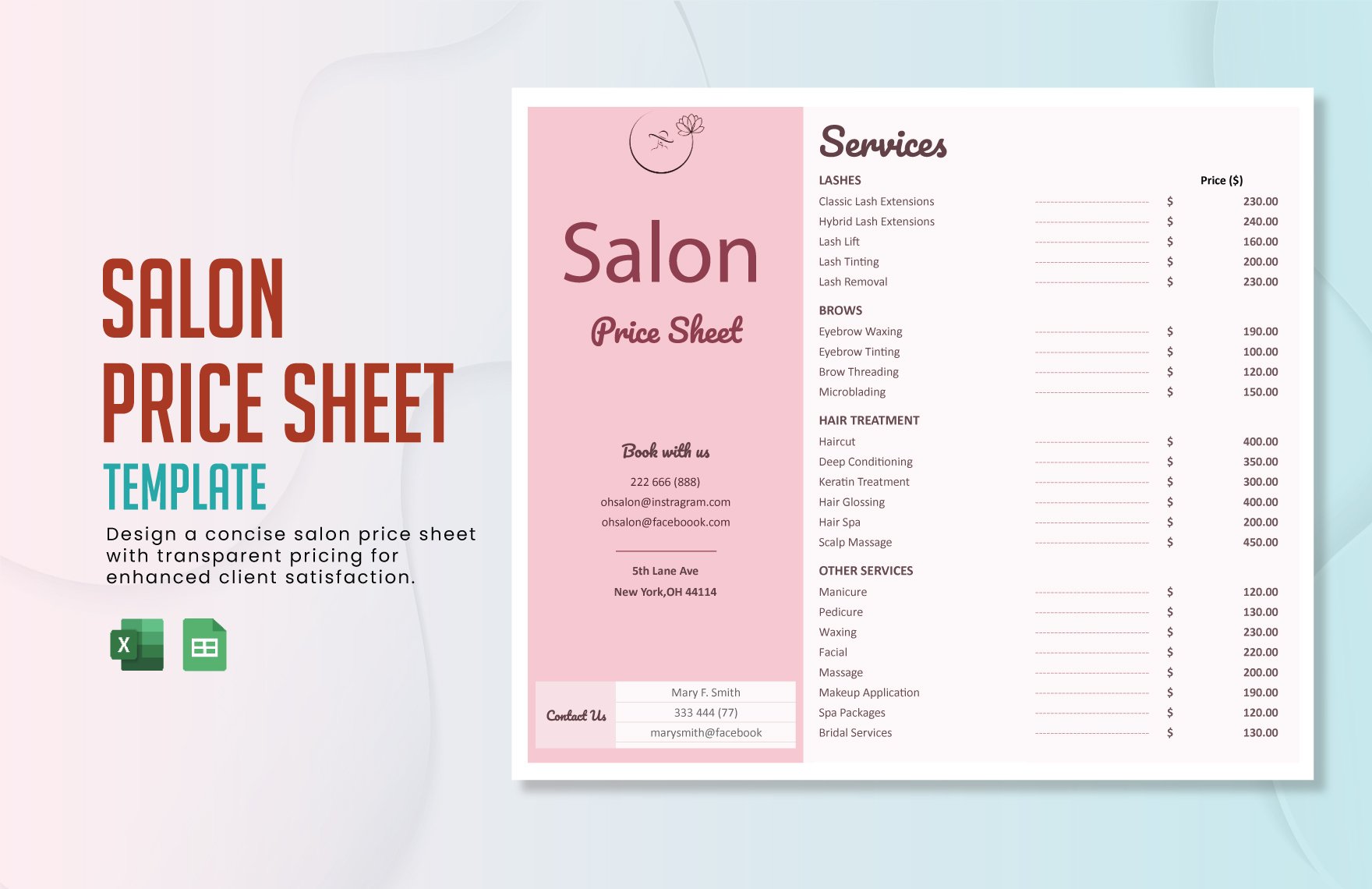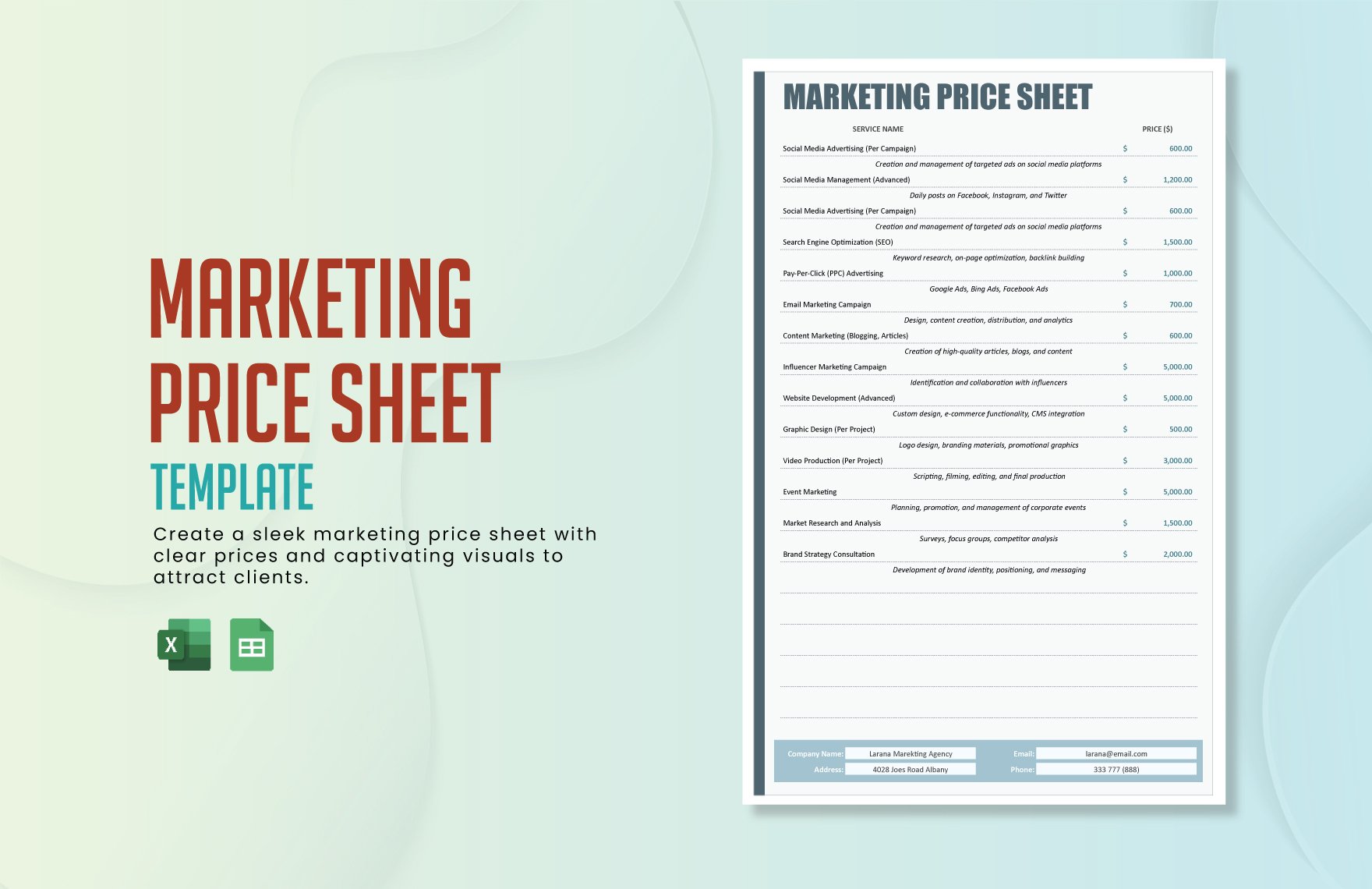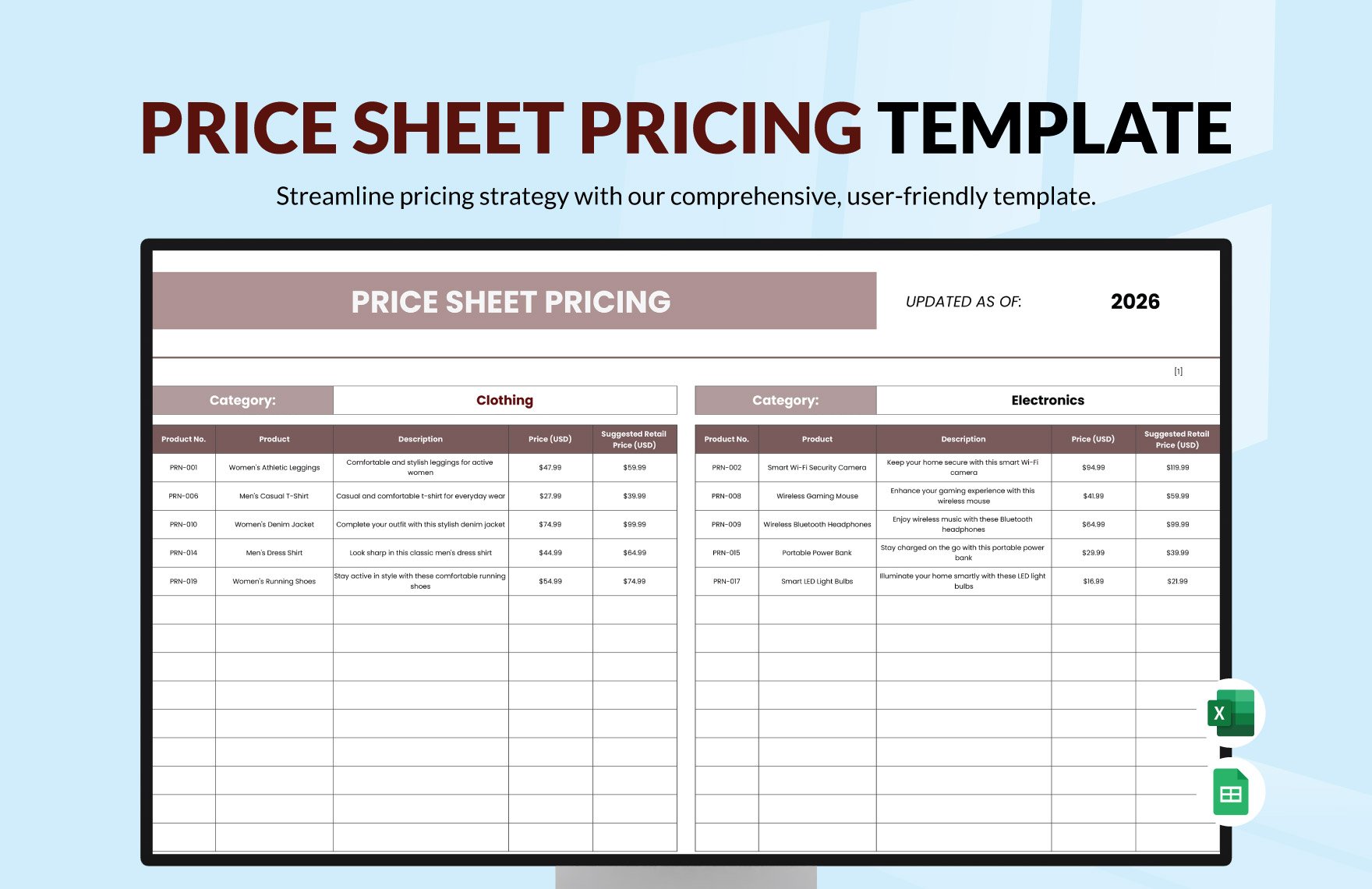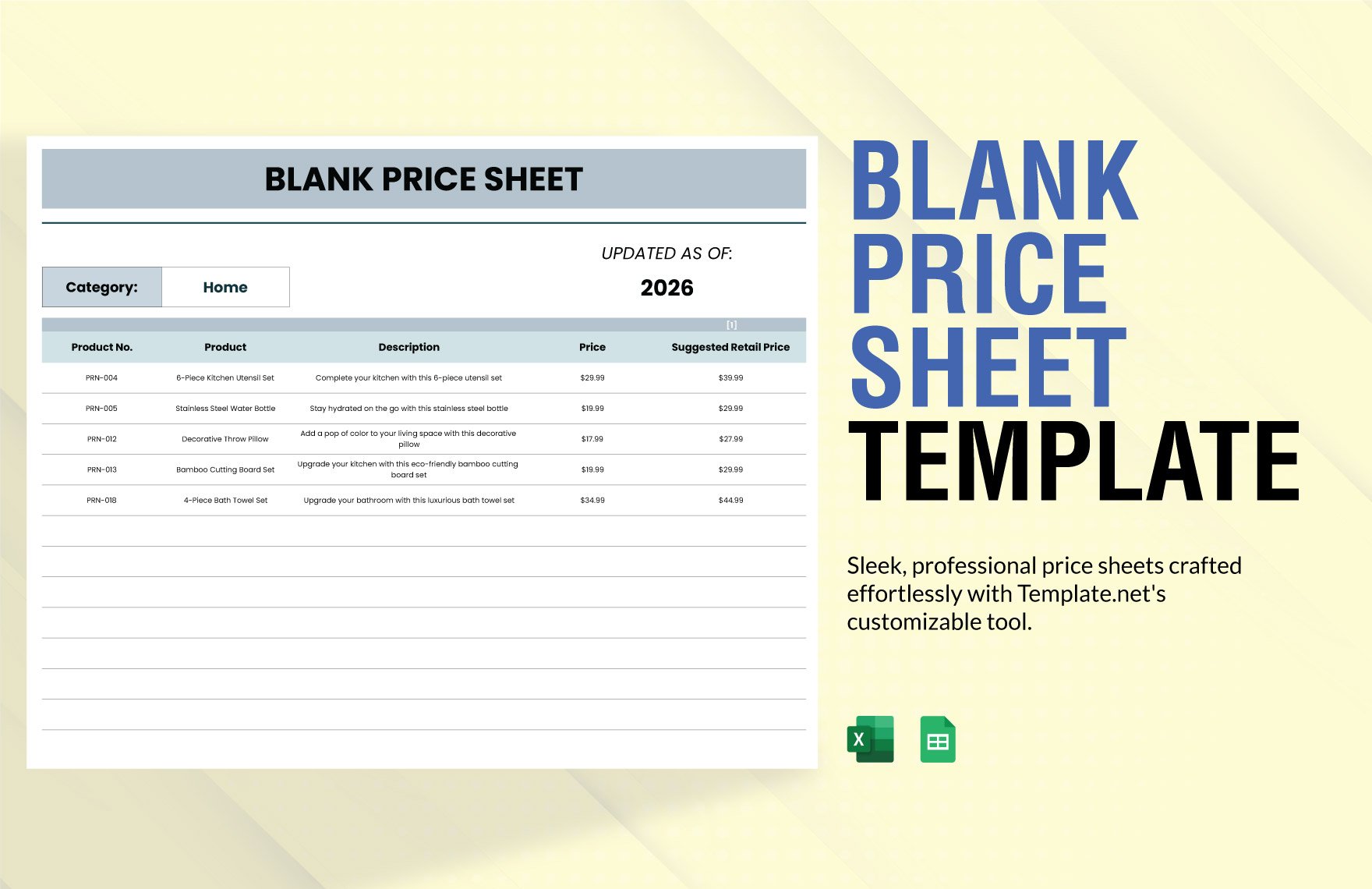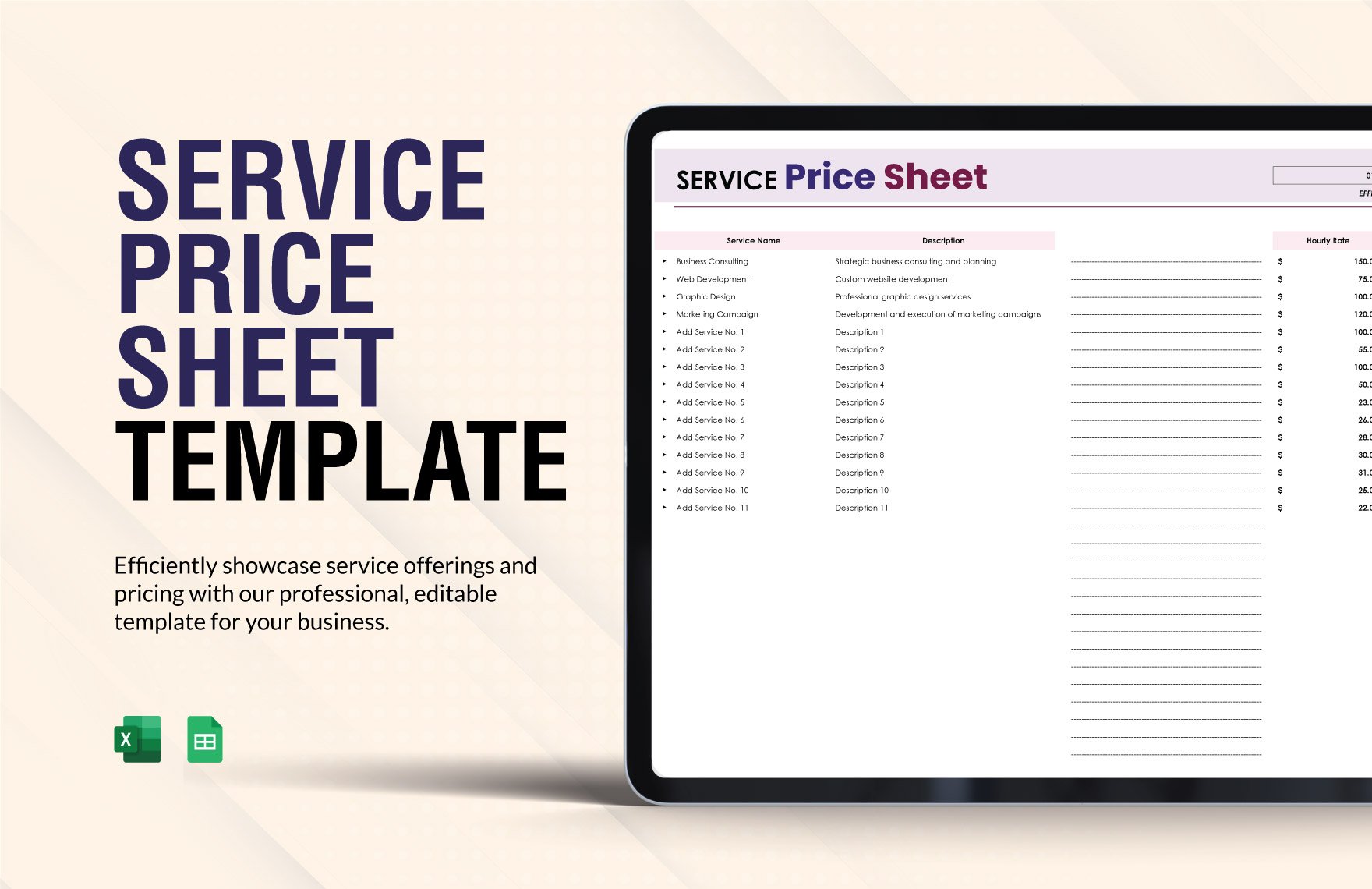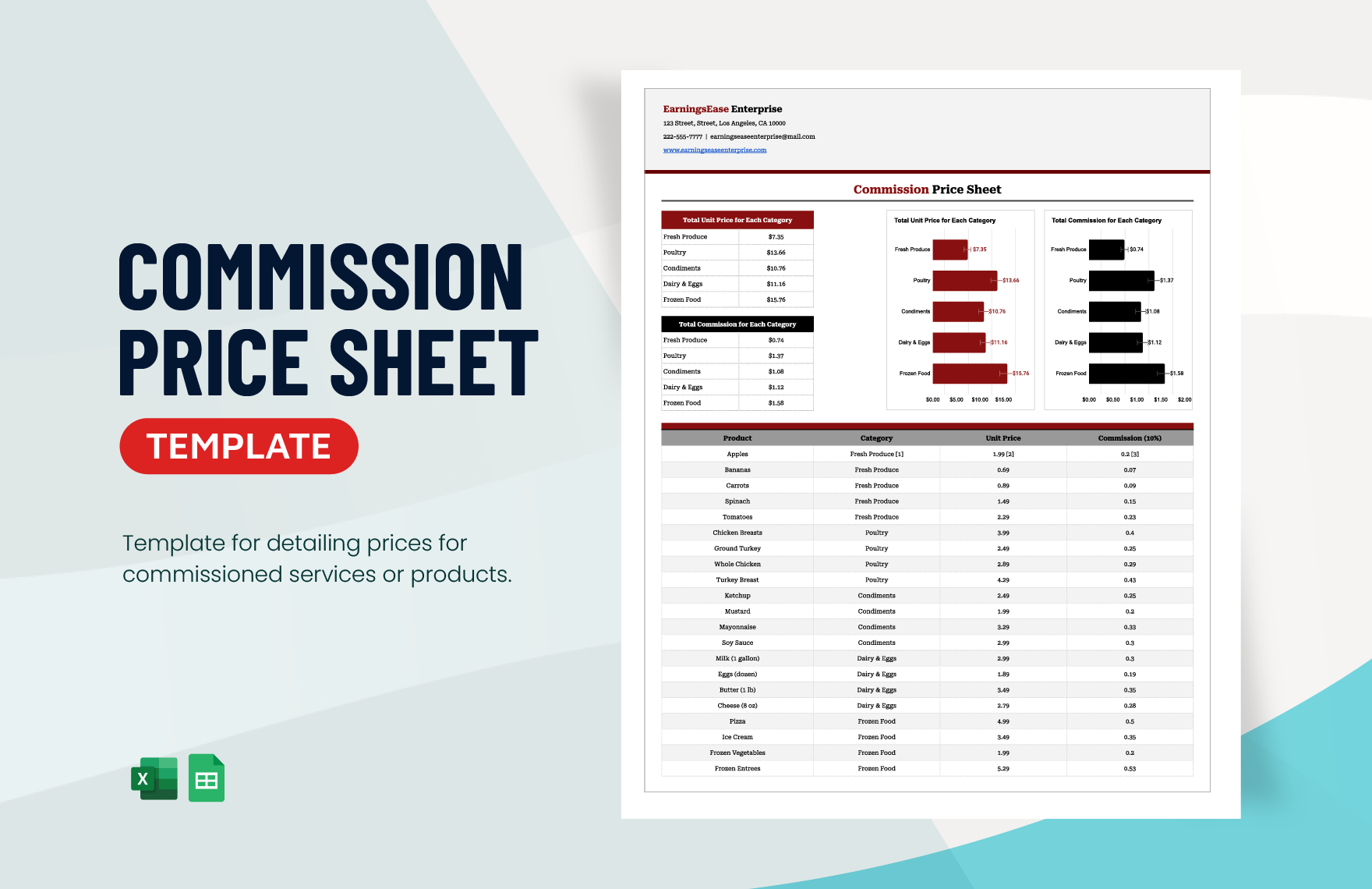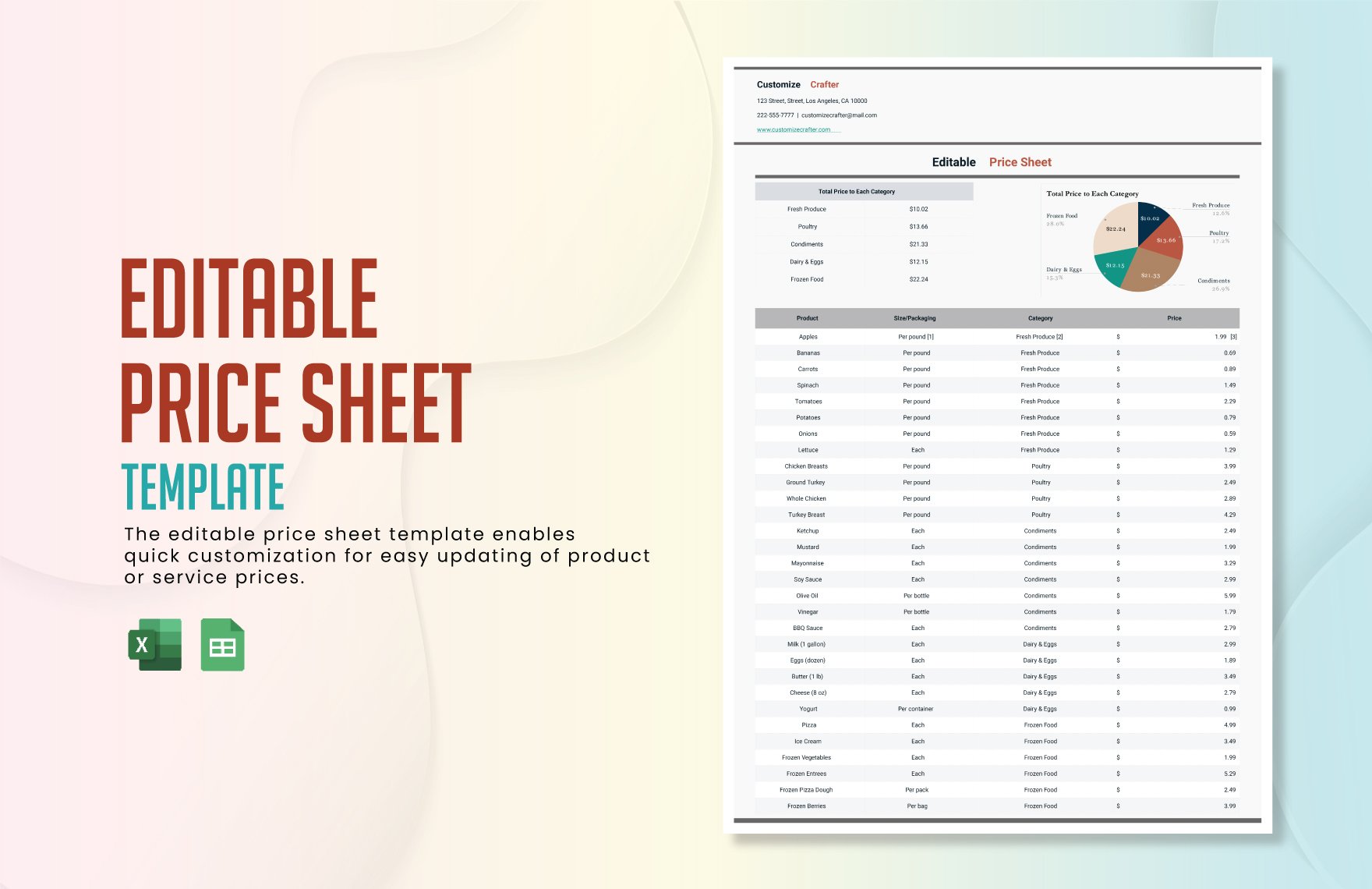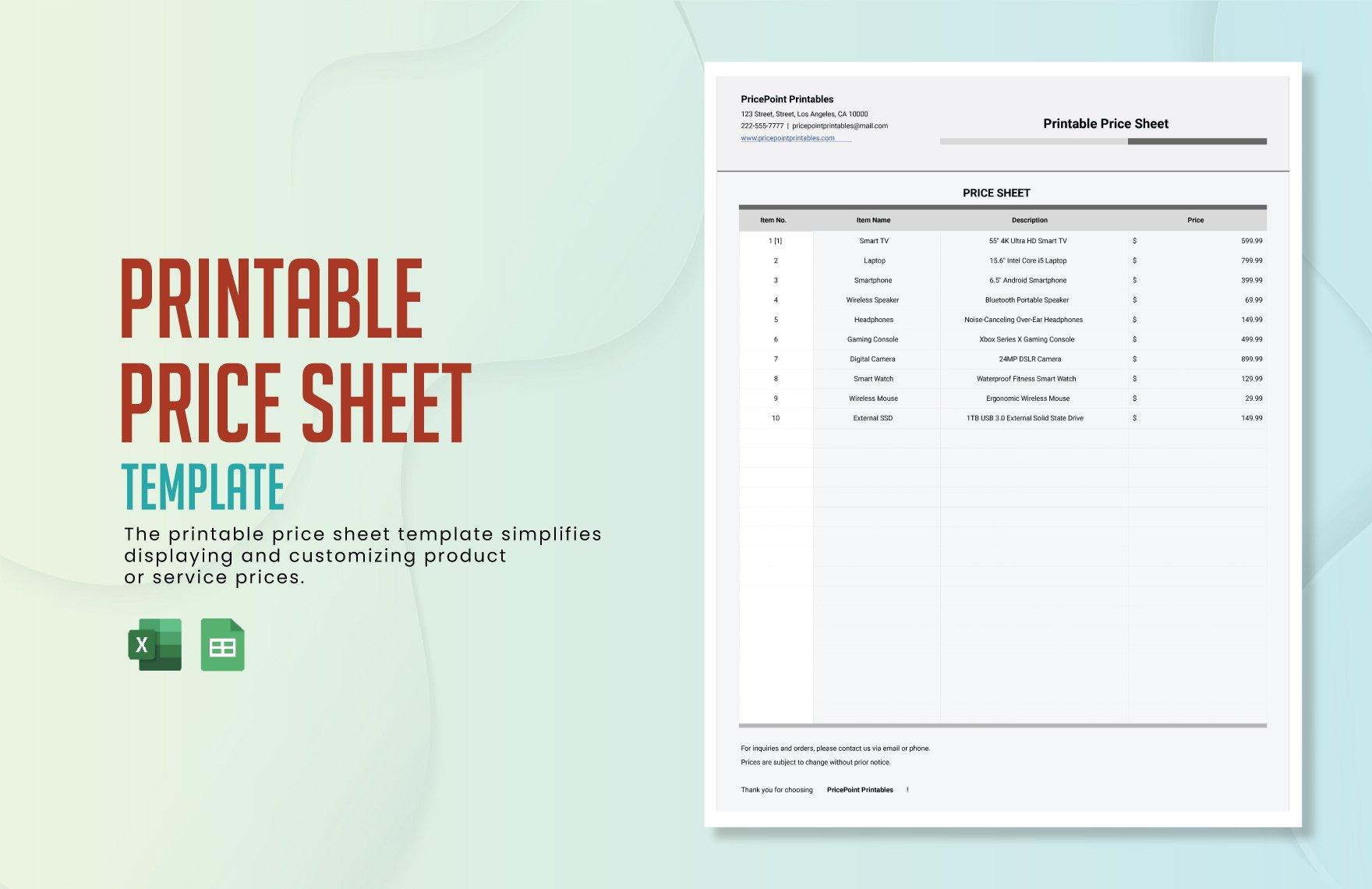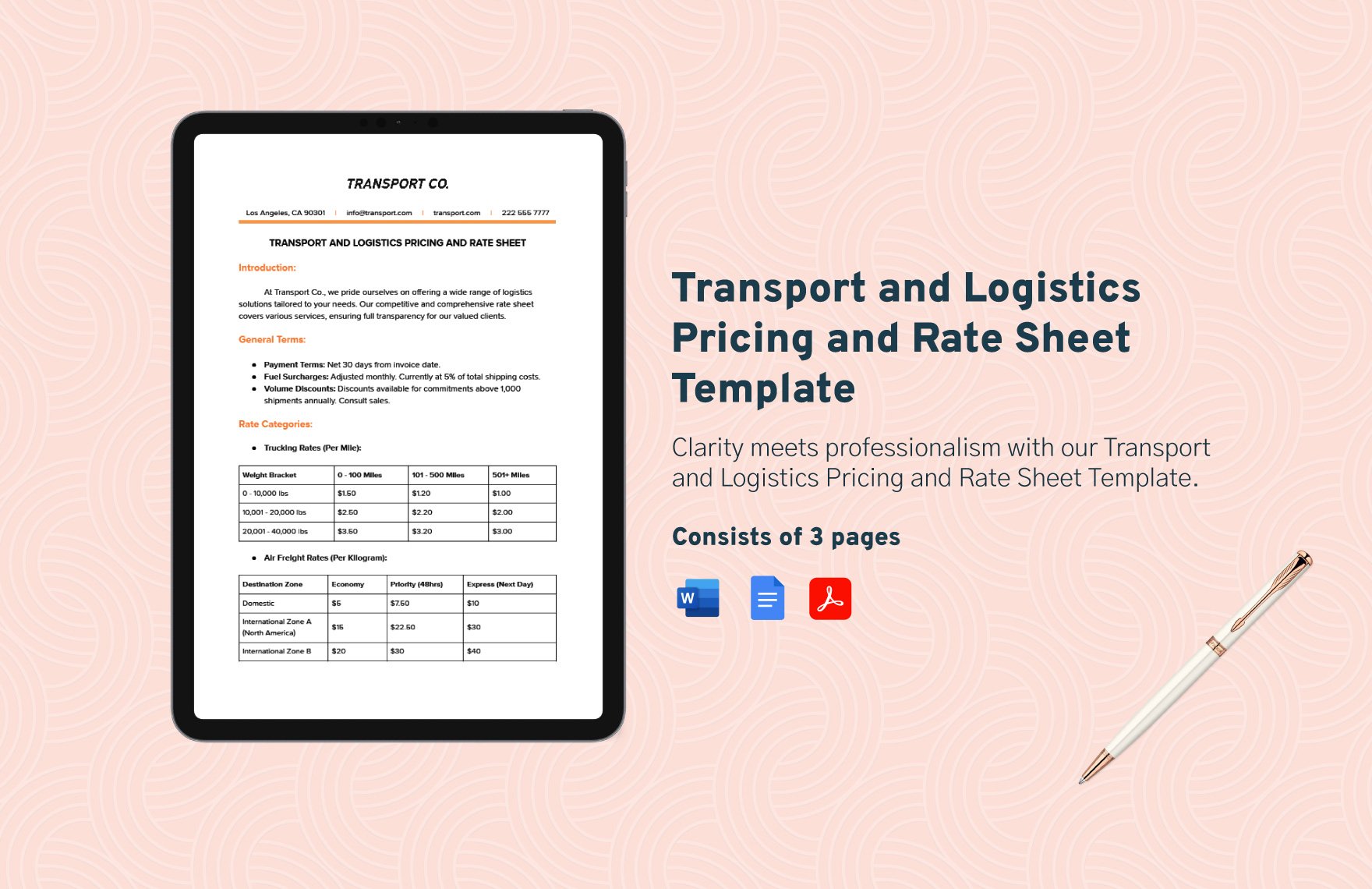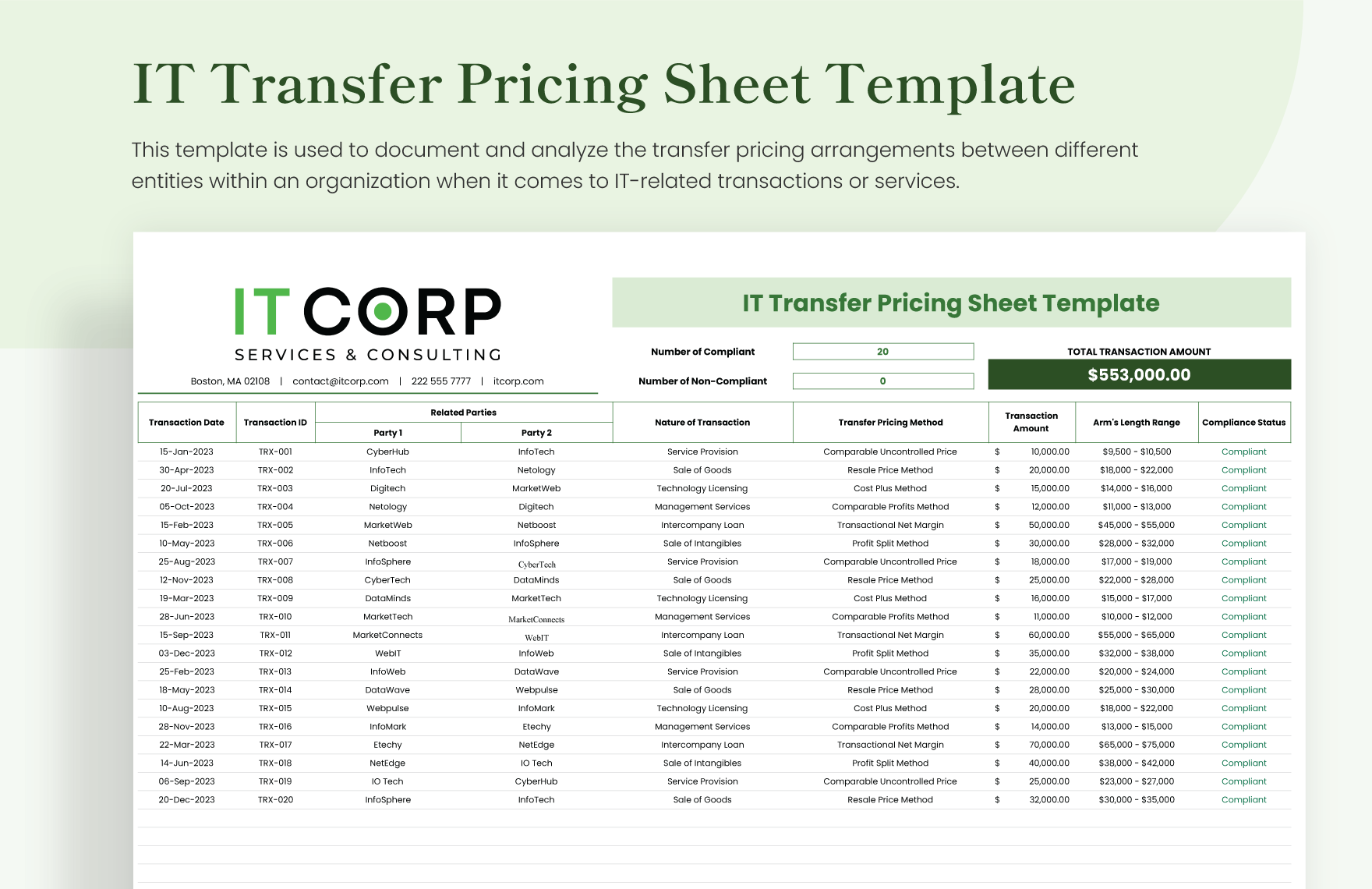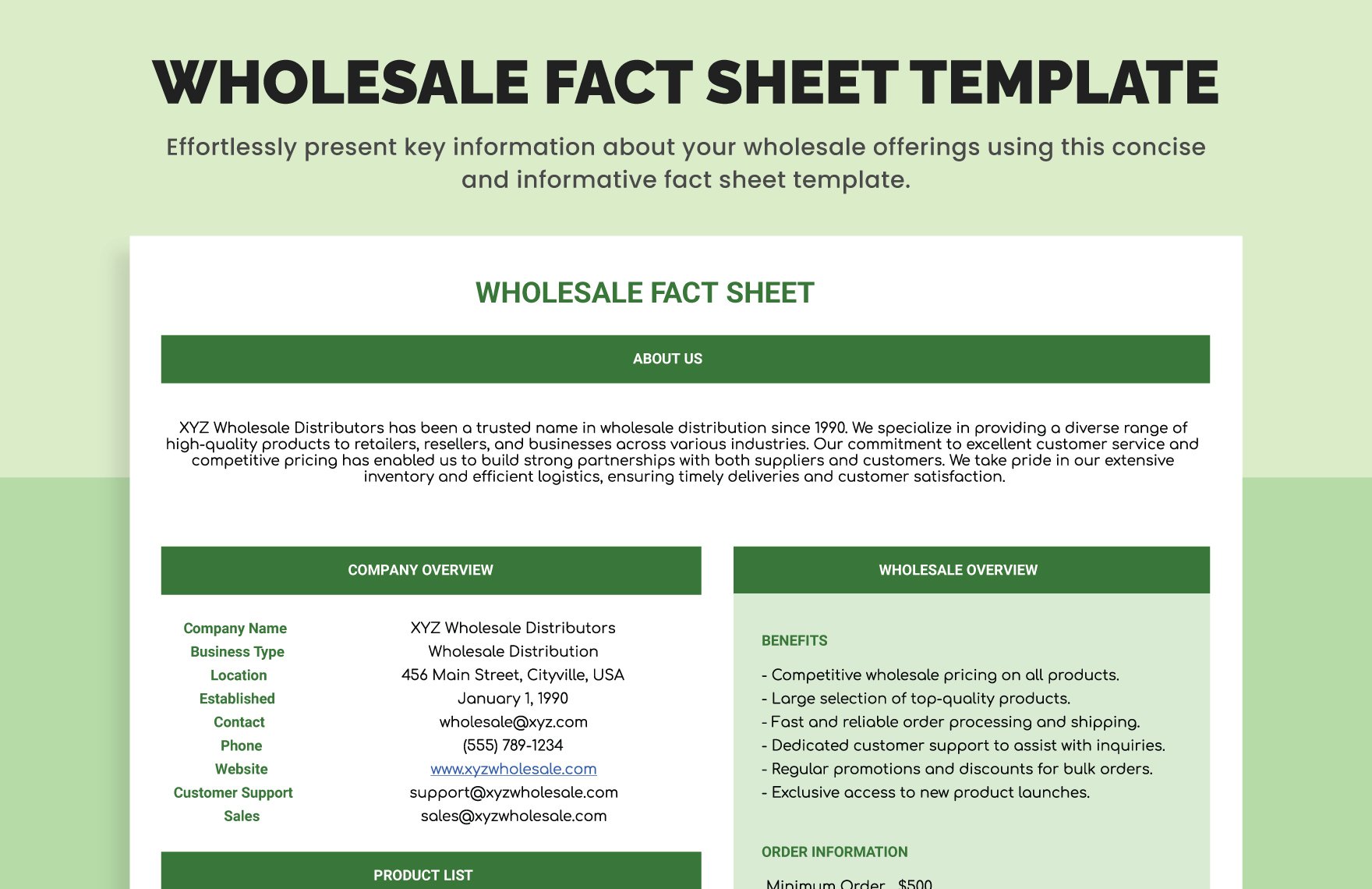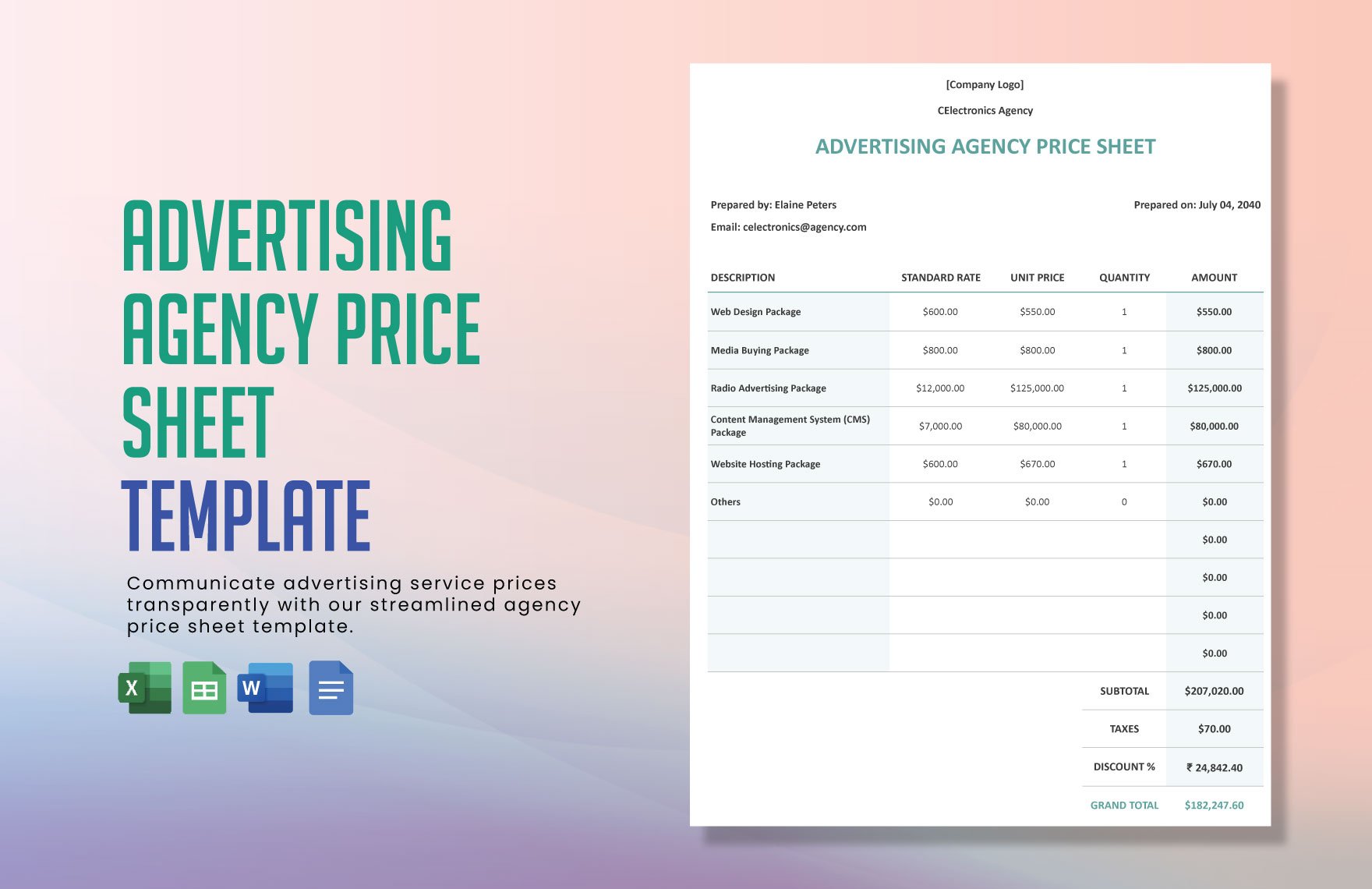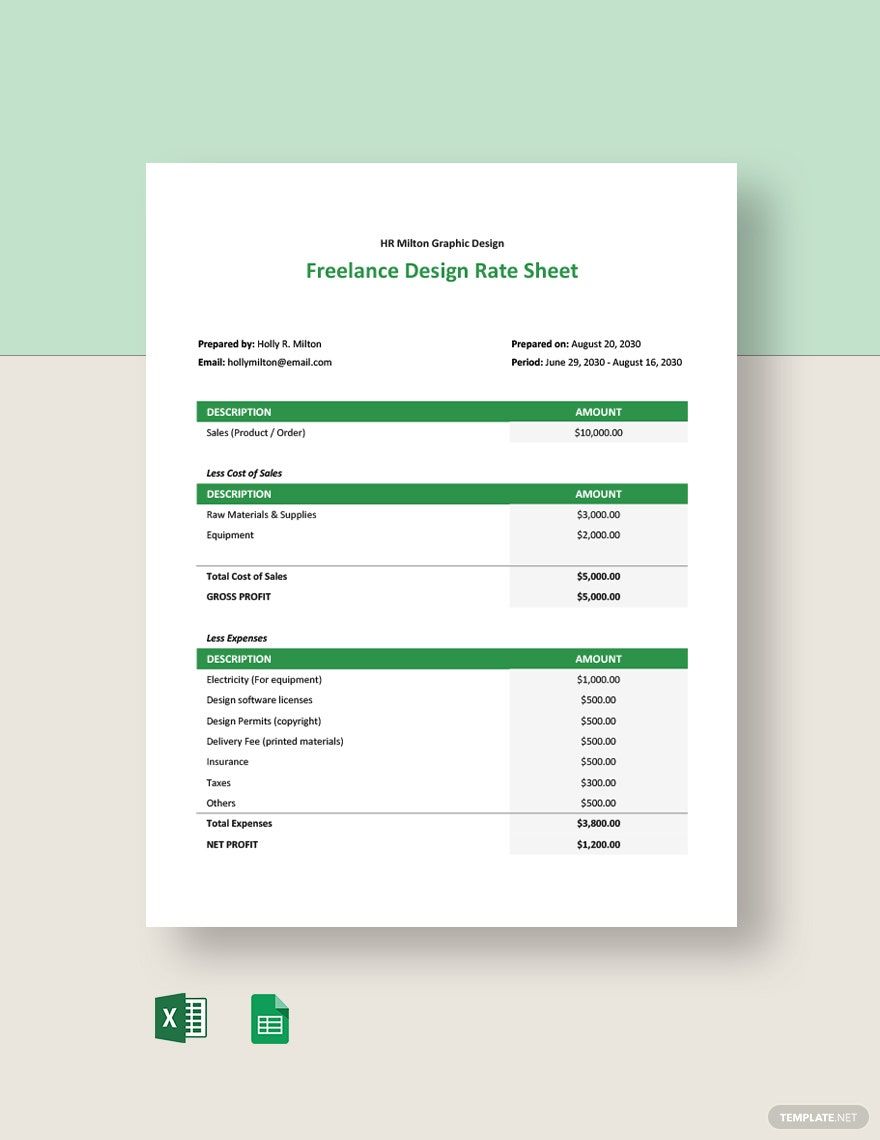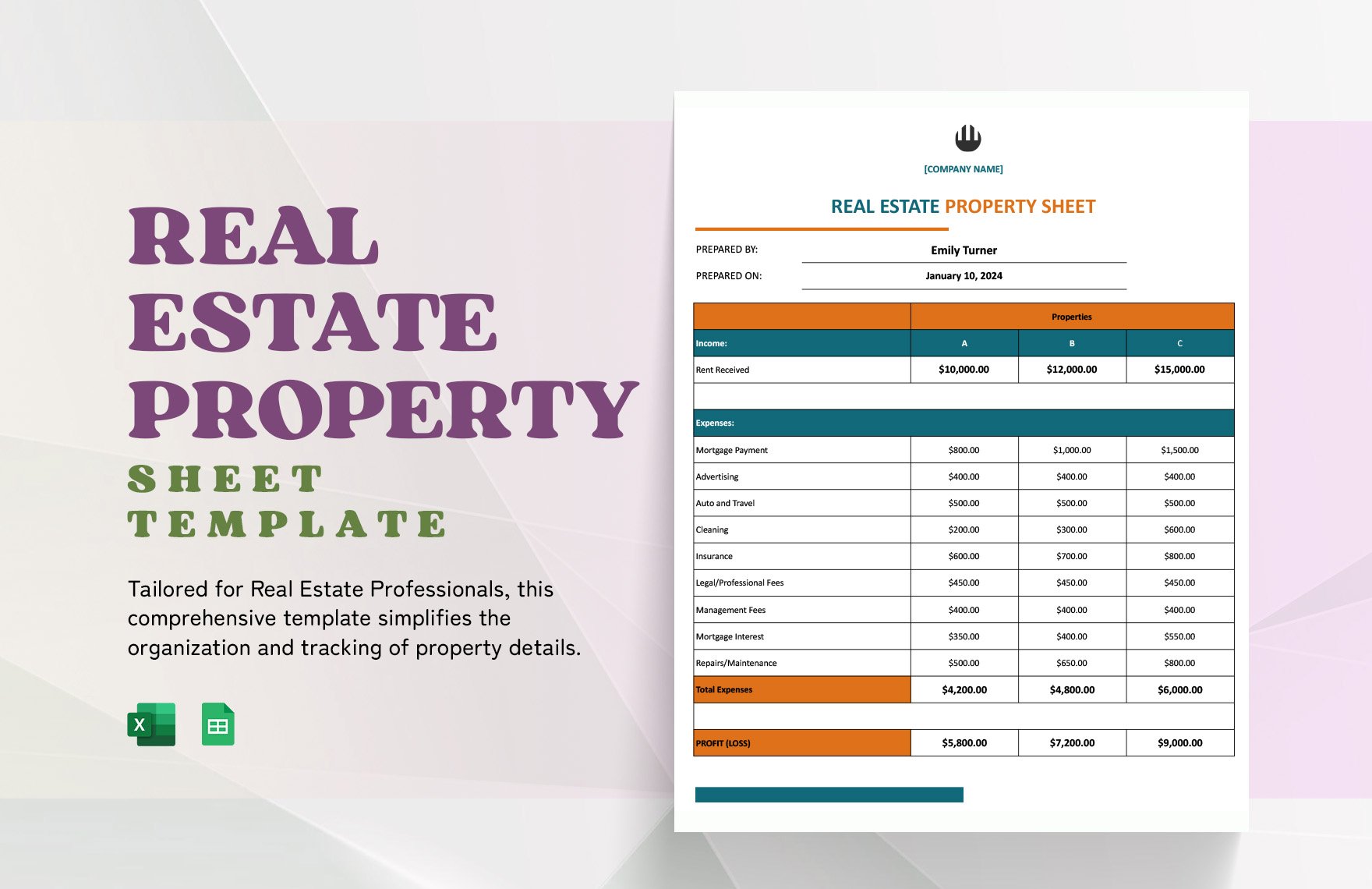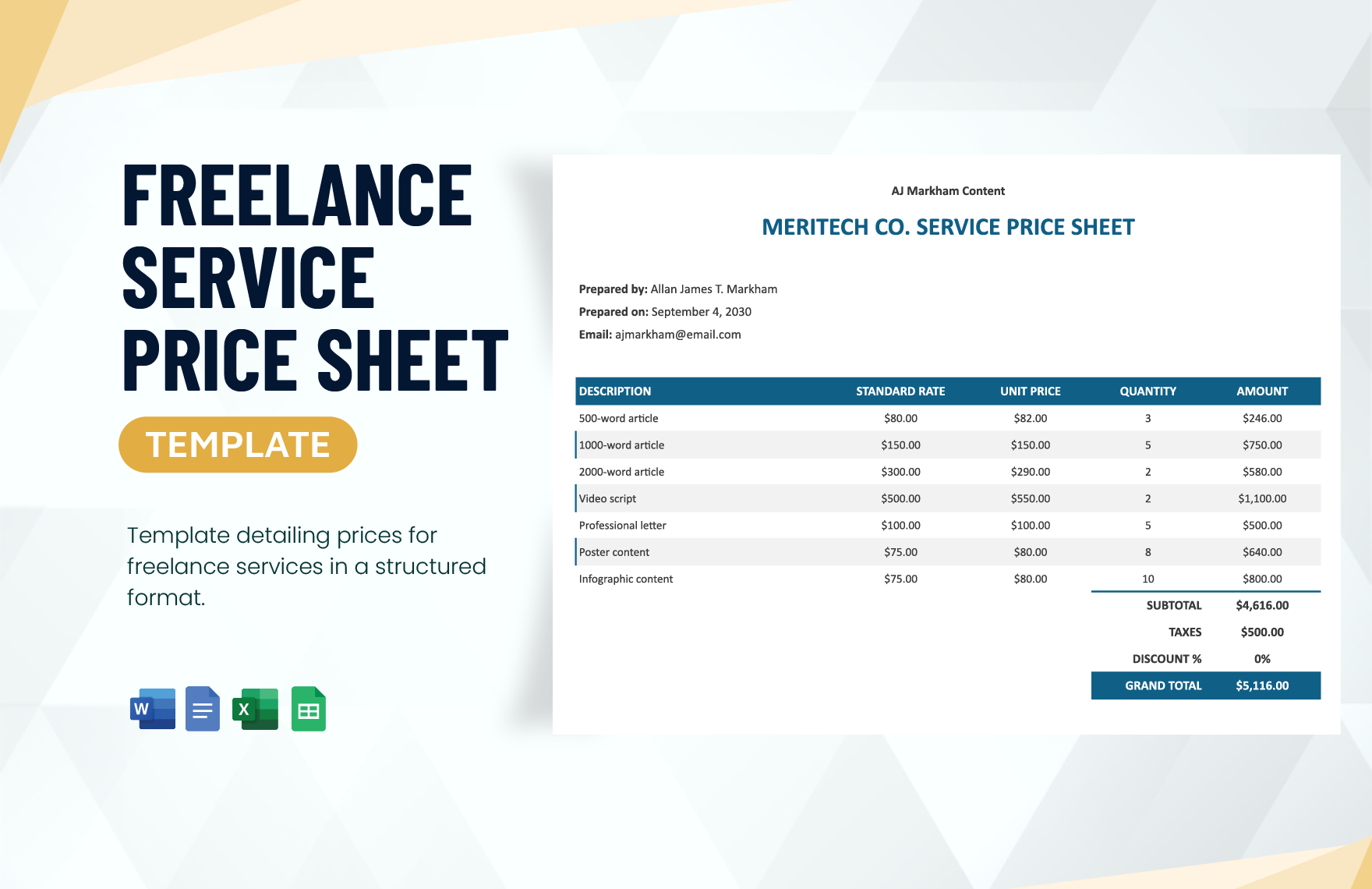Make Your Business Promotions Shine with Price Sheet Templates from Template.net
Keep your business promotions engaging, professional, and effective with Price Sheet Templates from Template.net. Designed for businesses looking to streamline their pricing presentation, these templates help you showcase your offerings in a polished and organized manner. Whether you're aiming to promote a special sale or announce new product prices, these templates facilitate clear communication. Simply fill in time and date details, add your promotional code, and include contact info to ensure your audience has all the necessary information at their fingertips. No design skills required—each template offers professional-grade design that's easy to customize for either print or digital distribution. With layouts optimized for both social media and traditional advertising, your promotional materials will attract and inform with ease.
Discover the many Price Sheet Templates we have on hand, ready to bring your vision to life. Begin by selecting a template tailored to your industry, then effortlessly swap in your product information, adjust the colors to match your brand's palette, and refine fonts for clarity and style. Take it a step further by dragging and dropping icons or graphics, adding animated effects, or utilizing AI-powered text tools for enhanced messaging. The possibilities are endless, and you don't need any specialized skills to create something spectacular. Our library is regularly updated with fresh designs, ensuring you always have access to the latest styles. When you’re finished, easily download or share your final product via link, print, email, or export, making it ideal for multiple channels and collaborative efforts.
